Yachting World
- Digital Edition


How to stay afloat: Top tips for rescuing a sinking yacht
- Will Bruton
- January 7, 2020
Will Burton explains how preparing your yacht for the worst-case scenario can help you stay afloat for longer

The Catalina 41 Coolabah sank within hours of striking an object in the Pacific. Photo: John Jennings
Twenty miles south of Salcombe, in deteriorating weather, Timothy Meo realised that the new 36-footer he was helping to deliver to the Solent was sinking. “The engine compartment was flooded with a lot of water. Initially neither of us could tell where it was coming from.
“We found the rate of ingress reduced when we were making way, so we changed course towards Salcombe, made a Pan Pan call to Falmouth Coastguard and switched on the yacht’s two electric bilge pumps – neither of which appeared to be working.
“We took turns on the manual pump, which did work, but it was exhausting. The Coastguard were keen to send out a lifeboat, but after some time pumping, we eventually felt we were keeping up with the water coming in; so we declined their offer and pressed on.”

The deeper the hull breach, the more water is forced in. A 5cm (2in) diameter hole 30cm below the water will let in 11,000 litres in one hour. Move that hole down to 1m, and 20,000 litres of water will flow in
The yacht reached Salcombe safely and the source of water ingress was found to be an incorrectly installed wet exhaust system. Meo is philosophical about his near sinking experience. “We had a thorough handover from the yacht builder, a reputable company, and left with no reservations about making the passage.
“The assumption that a brand new boat is safe, though, is a dangerous one. We later found that the electric bilge pumps didn’t work because they were clogged up with shavings and dirt from the build process. A high pumping capacity, that’s been thoroughly tested, is absolutely essential. The boat being a unique design certainly contributed to the ‘unknowns’ about it. All of us learned from the experience, including the manufacturer. It could have been much worse.”
While it is rare, but not impossible, for a yacht’s hull to fail, mechanical failure is a more likely cause of sinking on a modern yacht. David Greening, a small craft surveyor, explains: “In a modern GRP yacht, the first three things I would always look at are mechanical.
“One: the condition of the propeller shaft seal. Two: the rudder stock, and three: the keel. Looking at both the fastenings and supporting structures. Failures in these three areas are the most likely points of failure, which can be caused by poor design or maintenance.”
Article continues below…

Mayday, we’re sinking – crew rescued from the ARC yacht Magritte as she goes down
Early evening on 3 December Steve Arnold was awoken by his friend and crewmate Andy Mills, who had noticed water…
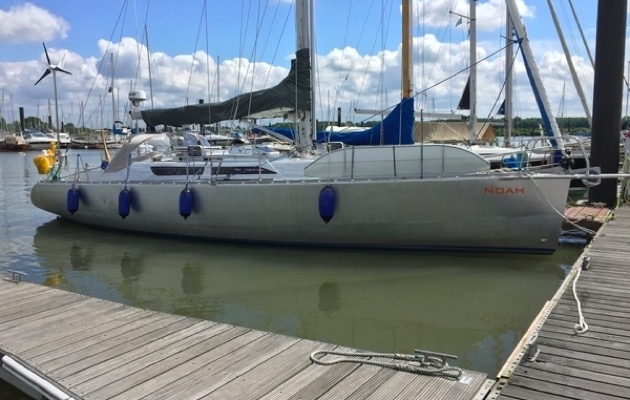
Three crew and two children rescued in the Atlantic from sinking ARC yacht
A crew of five taking part in the ARC transatlantic rally has been rescued after their yacht began sinking yesterday.…
As yachts have become more comfortably equipped, the number of seacocks has increased. With each comes an inherent point of weakness. “They should be inspected annually for signs of corrosion, rust and dezincification. The hoses should be double jubilee-clipped and have tapered soft-wood plugs in case they fail,” adds Greening.
So what should you do if you find your yacht is taking on water? First, you should try to determine where it is coming from. Second, reduce the rate of ingress. And third, get the water that has come in back out: in the most efficient way possible.
These fundamentals of damage control are something taught to every sailor at the Royal Navy’s Phoenix Damage Control Instructional Unit in Portsmouth. A multimillion-pound sinking ship simulator where all Royal Navy personal are trained, very realistically, in the fundamentals of how to stay afloat. Whilst there are some differences between a steel warship and a sailing yacht, they are battle-tested principles that can be used on any boat.

A manual bilge pump with good leverage is a useful addition, but what is your yacht’s overall pumping capacity?
Lieutenant Rob Manson, who runs the training facility, explains that they teach sailors to think and act fast. “With every minute that passes, the situation becomes more complicated. The more water that’s in the hull, the more unstable the vessel can be and the more likely it is to capsize. What we teach is a relatively simple skill set that can be put into practice almost anywhere on board. The training is conducted in seawater, so it focusses the mind!”
What equipment to have on board a yacht to stop it sinking is something that’s best decided after considering what a sinking might actually entail. Sailing rally safety checklists usually include soft wooden plugs for all seacocks, as well as manual and electric bilge pumps – all sensible things to have on board.
However, in recent years the number of yachts that have run into submerged objects, including whales and shipping containers , has increased significantly, posing the question: is being ‘holed’ likely to mean a round hole or more of an irregular gash.

Once floorboards and stores are floating – as here on the yacht Magritte shortly before she sank in 2016 – finding and tackling a leak becomes near impossible
One particularly impressive product is Stay Afloat – a flexible waterproof putty that can be jammed into the most inaccessible points and has proven itself to be highly effective.
It can be jammed into a failed stern gland, or seacock, seal along the line of a gash in the hull, or in conjunction with other materials found at hand.
The stern gland remains an Achilles Heel of modern yachts, explains Vyv Cox, a professional yacht engineer. “One of the largest holes in the boat, through which water might penetrate, is the stern tube through which the propeller shaft passes.
This has traditionally been sealed by a packed gland consisting of three or four turns of a woven flexible material such as graphite-impregnated cotton or PTFE. This design is reliable and rarely causes major leaks on failure, but it does have some disadvantages, resulting in the emergence of several patent seal designs.
In the vast majority of cases these are highly reliable and overcome the drips and need for greasing of the traditional type, but their failure can result in considerably greater influx of water.
“Originally, traditional gland types were solidly attached to the tube but the advent of flexible engine mountings dictated that the gland also needed to accommodate shaft movement by being mounted on a length of rubber hose. Fracture or loosening of this hose is potentially the greatest source of leakage.
“Packed glands can be over-tightened quite easily, leading to [the hose’s] disintegration. In some cases there are ‘dogs’ on both the stern tube and gland housing to prevent this. Most patent seal designs, exert far lower frictional drag, making this failure type less likely.”
If circumstances allow, stopping water coming in from the outside of the hull is likely to be more efficient as the water pressure is working with you, not against you. For this, a sail or piece of PVC matting stretched over the hole can prove effective, but only if it can be firmly held in place.

Under-bunk boards were cut, glued and drilled into place underwater on the catamaran Ensemble after she was holed
Even better is a combination of wood, Stay Afloat, and screws, which can be put together to fashion a serious patch. The essential tool to carry to make this work is an old fashioned hand drill, usable underwater, albeit slowly.
This solution carried the catamaran Ensemble over 800 miles when it was holed on a remote Pacific atoll while at anchor. Nearby cruisers came to Ensemble ’s assistance, including retired engineer Ed Butt, who helped fix a piece of wood to the outside of the hull by diving underwater and driving fixings through the hull.
Interior access to the hull is another consideration, particularly when buying a new yacht. Some modern moulded interiors actually make it quite difficult to get to parts of the hull that might be holed, so the means to break through the interior quickly is an additional consideration. A weighty axe is carried by many offshore cruisers for this purpose.

An engine driven bilge pump, common on fishing boats, can shift a large quantity of water and isn’t dependent on battery power
Modern yachts are usually equipped with both electric and manual bilge pumps, but surveyors often remark that electric pumps are poorly installed, meaning they are inefficient, while manual pumps would be of little use in an emergency. The sums make difficult reading for anyone with only a standard sized pump on board.
A hole 2.5cm in diameter, 30cm under the waterline, will let in 2,700 litres of water per hour. A 5cm hole in the same position will let in 11,000 litres. Most underwater collision damage occurs even deeper, meaning an even faster ingress of water.
Being able to pump out a large volume of water won’t save your yacht on its own, but it might just buy you enough time to affect a temporary repair, or abandon the yacht in a controlled way. So how do you go about increasing your yacht’s pump-out capacity significantly?
Something that’s common on even small commercial fishing boats is a main engine-driven bilge pump. Not reliant on electrical power to run (your yacht’s batteries could quickly find themselves underwater) and with a very high pumping capacity when compared to an electric pump, they operate directly from the engine.
Another option is fitting an oversized electric pump that’s rated for continuous use, or better, having one you can deploy quickly in any part of the boat on a long lead. Another tool Ed Butt used, two 4,000 gallon per hour (gph) pumps strapped together, made an enormous difference, buying enough time to make repairs with help from others in the same anchorage.

Twin 4,000 gallon per hour pumps kept water ingress at bay for long enough to effect a sturdy repair on Ed Butt’s catamaran Ensemble
The obvious and unexplained
Despite our best efforts, incidents in the past, such as the unexplained sinking of ARC yacht Magritte in December 2015 , demonstrate that well prepared and equipped yachts can and do sink without explanation.
In parallel, the risk of hitting a semi-submerged object, such as debris, sealife or a shipping container, would appear to have increased. So while preparing your yacht to avoid sinking, consider making preparations at the same time to abandon in a matter of seconds rather than minutes.
Pan Pan or Mayday?
In the event of finding out that you are taking on water, letting the Coastguard and other yachts know about your situation is wise. A Mayday should only be used if life is in ‘imminent danger.’ If you are sinking rapidly and anticipate abandoning the vessel very soon, send a Mayday.
A Pan Pan says ‘it’s serious, we need help, but there isn’t a grave or imminent danger to the boat or those on board’. Should things deteriorate rapidly, they will already have information about your position and situation.
Finding the source of a leak
- If you are sinking, locating where the water is coming from can be challenging, particularly if the source is below the waterline.
- First check that it is definitely seawater. A failed hot water tank valve on a larger yacht will result in a lot of water in the bilge! While it’s not generally advisable to taste bilge water, in an emergency, this is a quick way of determining whether it’s salty or fresh.
- Work logically through all of your boat’s through-hull fittings from bow to stern. A laminated diagram should be kept with the yacht’s documents. Be sure to include the stern gland.
- Pump as much water out as possible, this may well reveal where the water is coming from.
About the author
William Bruton, 27, grew up in Lancashire and learned to sail in 2012. He now works as a freelance skipper all over the world, specialising in Oyster yachts.
First published in the August 2017 edition of Yachting World.

Can Yachts & Sailboats Tip Over & Sink? (Explained)
Yachts can tip over, and they can sink just like any other type of boat . However, some yachts can capsize and sink more easily than others. The size of the yacht and the draft plays an important role when it comes to capsizing.
Let’s talk about exactly how and when yachts may capsize and sink.
We’ll also talk about what you can do if you’re unfortunate enough to be on a yacht that has capsized or sunk.
Table of Contents
Capsizing – How it Happens For A Yacht
There are a few different factors that will determine whether or not a yacht capsizes.
The main three factors are:
- The amount of force placed on the vessel
- The center of gravity of the boat
- Whether or not waves are approached correctly.
1) Too Much Force on The Sail
A sailing yacht has large sails meant to take a great amount of force without being destroyed.
These massive sails provide the power a sailing yacht owner needs to move their large vessel.
In most cases, the force of the wind upon the sail will lead to some heeling. The amount of heeling that the boat undergoes will depend on how skillfully the boat is sailed, the amount of wind being applied to the sail, and the design of the boat.
Knockdowns Vs. Capsizing
When too much force is applied to the sail, the boat’s heeling motion will usually compensate for this, and the wind will run over the sail.
However, in extreme cases, the boat may heel too far and too fast, and the sailboat will be knocked down.

A knockdown is different from a capsize in that the boat falls on its side but does not flip completely over.
Knockdowns aren’t as bad as a capsize because the boat is usually still functional after a knockdown. However, a knockdown is still dangerous because the boat’s passengers can fall into the water.
If all of the boat’s passengers fall into the water, there will be nobody left in the boat to pick them up.
Sometimes a knockdown is so extreme that it turns into a capsize.
This is when the boat is completely flipped over. In this case, every passenger above deck will be thrown into the water, and the passengers inside will have to get out of the boat or hope that the boat rights itself quickly.
In many cases, a sailing monohull boat will right itself after a knockdown. This is because the boat should be designed with capsizing in mind. Boats with more than one hull will not right themselves after capsizing, but we’ll discuss that in more detail further along in this article.
2) Poor Center of Gravity
One aspect of a yacht that will determine its susceptibility to capsizing is its center of gravity.
A yacht with a higher center of gravity is much more likely to capsize than a yacht with a lower center of gravity.
In all likelihood, the yacht you buy will have a well -designed center of gravity.
This is especially true if you’ve purchased a Category A boat with a deep V that is meant for navigating rough waters.
A ballast tank will usually be built into the hull of the boat . This tank lets water into the hull to add weight to it.
In addition to the ballast tank, some boats will have weights that are used as ballasts. These weights are typically made of lead and can be used with or without a ballast tank’s presence.
3) Weight Distribution Plays An Important Role
Improper loading of a yacht can lead to poor weight distribution. Poor weight distribution throws off the boat’s center of gravity and increases the chances that the boat will capsize.
For this reason, yacht owners must know how much weight their boat can hold so that they do not overload it.
It’s also important that the weight that is added to the boat is evenly distributed throughout the boat.
The yacht owner may also want to consider putting heavier items down low as too much weight at the top of the boat can also lead to improper weight distribution.
4) Strong Waves Approached Incorrectly
Motor yachts and sailing yachts are both impacted by incoming waves.
A wave must be approached correctly or it could easily knock down or capsize a boat. The smaller the boat, the more important it is that the boat approaches the wave correctly.
In fact, according to Boat U.S. Magazine , when a breaking wave of equal or greater height than a boat hits the boat from the beam side, it will always roll it at least 130 degrees past parallel.
How to Approach (Big) Waves In A Yacht
A yacht, or any other boat for that matter, should approach waves at the bow or stern side.
This keeps the boat more stable and allows it to work with the wave rather than against it.
Ideally, you’ll take the waves at the bow, but if it is a choice between the stern and the beam, you’ll always want to choose the stern.
This is important in order to ride the wave correctly. Otherwise, you will not be in full control, and you might end up taking in water or eventually experience tipping over.
Some Types of Yachts Capsize (And Sink) More Easily Than Others

Monohull owners have a disadvantage over catamaran and trimaran owners in that their boat can capsize and sink more easily.
This is because the one-hull design makes them less stable and because they only have one hull, there isn’t any redundancy in case of a hull breach.
If you haven’t yet considered whether to get a catamaran or a monohull boat, you need to read our pros and cons list of catamarans compared to monohull boats . It’s everything you need to consider before you choose what’s right for you.
Also, a monohull usually sits deeper in the water, so it is more likely to hit objects that could cause a hull breach.
This is especially true in shallow water and around reefs.
On the other hand, once a catamaran or trimaran yacht does capsize, it cannot right itself. A monohull yacht can usually right itself after it capsizes.
What Happens After A Boat Capsizes?
When a boat flips over, it immediately begins to fill up with water.
Anything that was on the deck goes into the water, and anything inside the cabin begins to fly around and will eventually float as water enters the cabin.
People who were on the deck are now in the water, and people inside of the boat are now upside down.
It can be very disorienting for these people, and they may be too injured to make their way out of the boat.
Monohulls In a Capsize
Monohull passengers will probably be flipped back over shortly after they are knocked down.
The biggest danger for these people is the fact that they may be injured. This is especially true if items were left out or hatches were left open.
For example, one open kitchen drawer could lead to knives flying around the cabin during the capsize. Even if all of the cabinets and items inside the boat were secure, the passenger could still be injured from falling.
If the passenger were in the forward cabin, they would be less likely to be injured since this cabin is often a berth consisting of only a bed.
Multi-hull Yachts During a Capsize
As we stated earlier, a multi-hull is not going to right itself.
Also, it can be a long fall off of the deck during a capsize because of its wide stance.
For instance, a 50-foot catamaran could have a width of 26 feet.
This means that a person on the deck could end up falling 26 feet into the water during a capsize. They could hit the mast or any number of other items protruding off the deck on the way down.
The people inside the cabin will be upside down, and they’ll need to get out of the deck or hull that they’re in.
Some yachts will have escape hatches that the passengers can use to safely get out of the hulls, while others may not.
How To Best Prepare For Capsizing

Sometimes the weather or a wave catches a sailor off guard, and there isn’t any time to prepare for a capsize.
There really isn’t much you can do at this point.
Other times, the weather changes, and the water becomes rough, and you know that there is a higher likelihood that the boat could flip over.
In this instance, you should make sure everyone has their life preservers on. You should also take down any bimini tops.
The reason for this is that people could get trapped under or within them after the boat capsizes.
You’ll also want to make sure everything on the boat is secure and that there aren’t any unlatched lockers or hatches. This will help prevent you from getting hit by your equipment during a capsize and keep water from entering the cabin.
It will also keep your stuff in your boat when you flip. If you’re boat rights itself quickly, you won’t have lost anything.
In some cases, you may want to keep everyone out of the cabins. The cabins can become incredibly difficult to get out of after the boat has flipped over, and people can drown inside them.
For this reason, it may actually be safer to be up on deck when the boat does capsize.
What to Do After a Yacht Capsizes
The first step if you’re still in the boat is to get out as quickly as possible.
Ideally, you’ll already have a life jacket on, so you won’t have any excuses for delaying.
Once you’re out of the boat, you’ll want to try to stay with it. A capsized boat is much easier for rescue crews to spot than a person floating in the water.
Also, a capsized boat can still make a great flotation device, so if possible, you could climb back up onto it. This is especially true if your yacht is a catamaran as it won’t be as difficult to climb back onto, and you won’t have to worry about it righting itself while you’re on top of it.
Being on top of the boat reduces your exposure to the water and any marine life that may wish to do you harm. Depending on where you’ve capsized, there may be a genuine threat of a shark attack. If one of the passengers has become injured and is bleeding, this will only increase the chances.
If it’s safe to do so, collect any supplies that you might need.
Water bottles, flares, and extra life jackets could become extremely helpful in an emergency situation.
In fact, the Coast Guard recommends that you tie any extra supplies to the boat as it creates a larger target for rescue crews to see. You won’t be able to swim back to shore so your best hope will be that someone is able to find and rescue you.
Will The Yacht Sink Completely?
It is rare for a boat to sink completely, but it is certainly possible.
In most cases, this happens for one of two reasons:
- Hull breaches
- The boat filling up with water.
Sometimes the boat filling up with water is known as the boat swamping.
A boat can fill up with water because its hull was breached, or it could happen for other reasons.
For example, a capsized monohull could continue to take on the water until it eventually sinks.
Common Reasons For Hull Breaches
A hull breach is when the hull is physically damaged and a hole or large crack opens up in the hull.
This can happen during collisions with:
- Other boats,
- Large rocks,
- Or The ground itself.
Basically, any obstruction that is large enough and hard enough to damage the boat’s hull can cause a hull breach.
When a hull breach does occur, it can cause the boat to take on water.
In some cases, the water incursion will be slow enough that the bilge pump can pump the water out, and the hull might be stable enough that the boat does not sink.
In other cases, the hull breach could be so large that even a large boat can sink.
The Titanic is a classic example of this. This ship was large enough that 4 forward compartments could have flooded without the boat sinking. Unfortunately, six forward compartments were flooded, and 2 hours and 40 minutes after the Titanic was hit, it sunk into the water.
How To Avoid Boat Swamping
A boat can be swamped for all sorts of reasons.
One reason that some boat swamp is because the boat owner has taken the drain plug out.
A small trailerable yacht could have a drain plug and the boat could end up filling up with water shortly after it leaves the boat ramp.
Another reason could be that the bilge pump has failed, and the yacht is under the stress of a heavy storm bringing with it a lot of water in the form of waves and heavy rain. Send enough sea water into a yacht and it will eventually begin to swamp.
In this case, it is recommended that the yacht crew close all hatches so that water cannot get below the deck. This way, the water brought onto the boat by large waves will simply roll off the deck.
A boat could also swamp if the transom were to come off. In this case, water would come in through the stern and could certainly swamp the boat.
Swamped boats won’t always sink.
If the boat has flotation built into it, it should be able to stay afloat. However, larger boats are not built to survive a swamping so it is entirely possible that they will eventually sink.
What to Do If Your Boat is Sinking?
The first step you’ll want to take is to make sure you have your life jacket on.
Once you hit the water, it will become difficult to get it on, and you may not even be able to find one at that point.
Immediately following this, you’ll want to put out a distress call.
Hopefully, there will be other boats in the area that can rescue you before your boat actually sinks.
After this, you may want to see if you can stop your boat from sinking. If there is a hull breach, you may be able to plug it. A broken bilge pump may be able to be repaired, or water might be pumped out manually.
If this isn’t possible, you might want to try to get the boat to an area where it will not completely sink. For example, if your hull was breached because of shallow water, you could leave the boat in the shallow area and stay on it until help arrived.
Once it is apparent that the boat will sink, you may want to grab as many supplies from the boat as you can. Just don’t risk going beneath the deck to do so or you may get stuck there.
You also need to be aware of horn signals. Here’s a great guide to horn signals for boats , so you know exactly what to do.
Final Thoughts
The chances of a yacht sinking or capsizing are very low.
You can lower these chances even further by avoiding bad weather and other dangerous situations.
If you do happen to capsize or sink, take the appropriate steps and you should be able to survive until help arrives.
Click to share...

Boating Basics Online is reader-supported. When you buy via our links, we may earn a commission at no cost to you. Learn more
How to Sink a Boat? – 7 Causes and Prevention Tips
Written by J. Harvey / Fact checked by S. Numbers
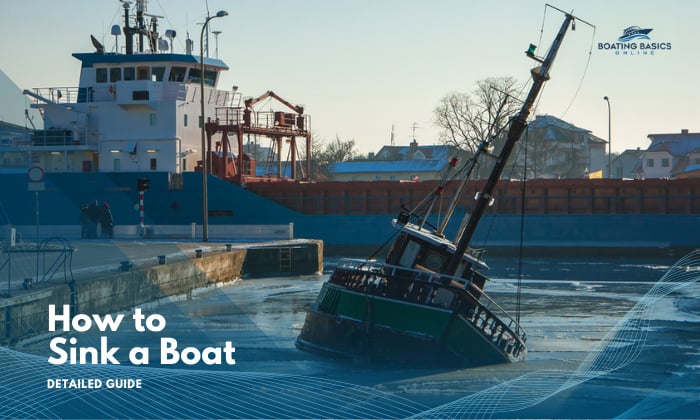
So you want to know how to sink a boat. Obviously, I won’t be teaching you how to deliberately sink it on purpose. I know of Youtube videos sarcastically titled as such can be a bit funny, but ultimately, all they ever do is promote unsafe practices.
A boat can sink because of flooding, collision, capsizing, poor water and weather conditions, faulty equipment, a low transom, and other mistakes. Read on to learn how they happen and how to solve them.
Table of Contents
1. Flooding
2. collision, 3. tilting resulting in capsizing, 4. poor water and weather conditions, 5. low transom height, 6. wrongly calibrated equipment, 7. human errors, safety considerations, preventing accidental sinking, 1. the boat is taking on water, 2. riding over choppy waters, 3. capsized ship, explaining the possible reasons why a boat may sink.
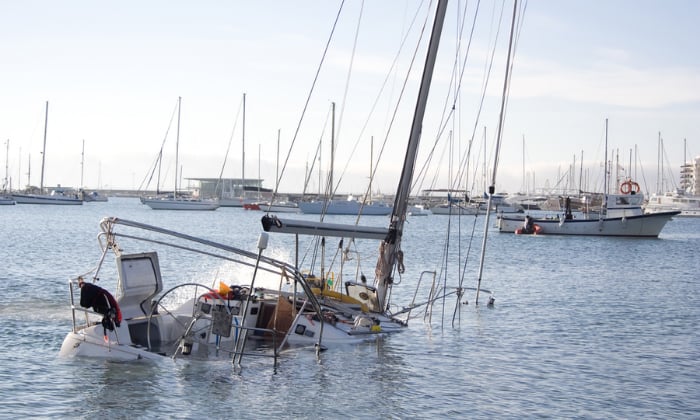
I’m going to make clear from the get-go that you don’t have to bother learning how to sink a pontoon boat or any vessel you might be operating. Nature, various circumstances, and human error will already do that for you.
There are a lot of possible answers as to what causes a ship to sink, as proven by this list:
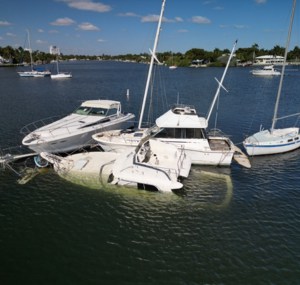
Even with all its state-of-the-art design and various bells and whistles, a yacht is not immune to flooding. What more for vessels that are less capable of handling it?
What makes matters worse is that flooding is tied to the other reasons listed here. It could happen because of leaks at thru-hulls or the cooling system if the boat is underway.
Any opening that shouldn’t be there and cause water to enter can bring about flooding. After all, it disrupts the balance between the water displaced and the vessel’s weight.
Flooding can be prevented with active inspection as well as installing tools that directly address this problem, like drain plugs and scuppers. Once you detect hull openings, they should be promptly repaired.
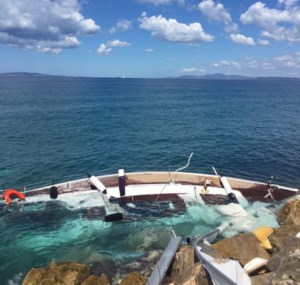
This includes colliding with another vessel, striking floating debris or rocks, or running aground. Once it damages the hull enough to create breaches, it won’t be long before it leads to loss of buoyancy which heightens the risk of sinking.
These can be prevented by being more careful with how you navigate your boat and not delaying when making the proper maneuvering decisions.
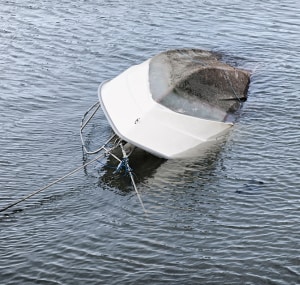
Once a vessel loses stability due to waves beating against it or wrong loading practices, it already has an increased chance of capsizing. In August 2022, I remember coming across a news story of a yacht that sank in Italy. The footage clearly shows that it’s tilted, and the choppy waters only made things worse for it.
I’ll tell you how tilting (excessive listing) can sink a yacht. Take note that that’s a 131-foot vessel.
Being more mindful of your boat’s stability and how you keep your load balanced go a long way in solving this. By keeping your weight low and draining excess water before they accumulate, you should stay upright and steady.
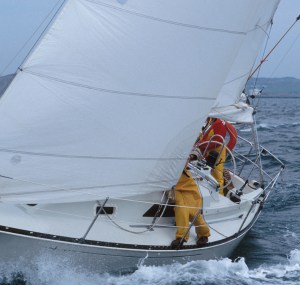
Capsizing, meaning a boat gets upturned in the water, can also be caused by nature. Severe weather characterized by battering high waves and billowing winds may become too much for a boat to keep its stability.
These are conditions you evidently have limited control over. Be sure to make the necessary preparations and precautions should the present forecast tell you that it’s going to be an unfriendly voyage.
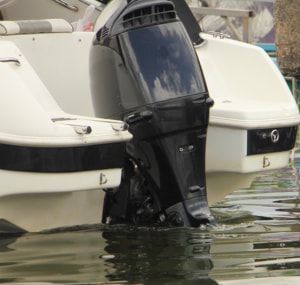
Having a low transom when you’re out on open water spells trouble, especially if the waves get too high and rough. It won’t be long before the waves get high enough to go over and into the transom, causing swamping and flooding.
This usually happens because you’re putting too much weight on the transom due to improper loading and weight distribution or having insufficient ways to drain water to prevent swamping.
Obviously, avoiding those will go a long way in steering clear of this issue.
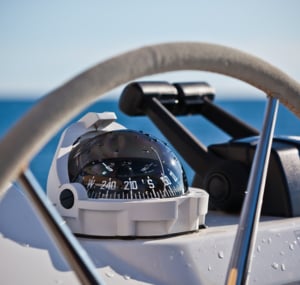
Perhaps, you didn’t calibrate your navigation equipment properly to the point that it’s no longer reliable and negatively affects your decisions.
Boat operators have drastically underestimated the danger of the weather in the past because of their inaccurate data, resulting in the loss of vessels (and lives).
On sailboats, operators tend to place their full trust in what’s shown on the repeater and speedometer, so they should take all the precautions to make sure they’re accurate.
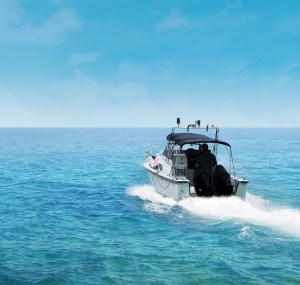
To err is human, and negligence can’t be completely eliminated. Sadly, even the faintest mistakes can create a domino effect that ends with a huge accident ending in total catastrophe.
- Just consider how leaks from poorly installed air-conditioning fittings, transducers, and gate valves can sink a ship even if it’s safely moored.
- The same can be said if we fail to identify the source of the leak and rely too much on bilge pumps. Those tools can only save you up to a certain point.
- Other factors can be fatigue, improperly trained crew, or undermanned vessels.
Mishaps and accidents in docks may also arise due to human error. For example, it could be because there’s a shortage of tugboats or a lack of more precise docking and parking systems available.
These mistakes can be mitigated by installing more advanced equipment that can help people make the right decision or action in a given scenario. However, as I said, we can’t fully erase the possibility of individual error.
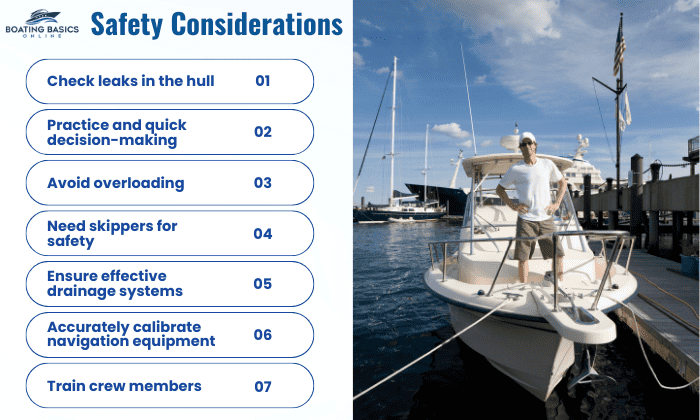
To prevent boats from sinking, I took the causes of boat sinking said above and observed their common denominators. Here are the safety considerations that I came up with:
- Stay on top of any problem that may cause leaks, particularly in the hull
- Practice more. Learn to make prompt maneuvering decisions.
- Refrain from overloading and having unbalanced weight distribution.
- Boats in waves that get too high with winds that pack plenty of punch should always be skippered by someone who knows what to do during bad weather (e.g., reducing speed, securing hatches, turning on navigation lights, etc.)
Knowing essential throttle techniques perfect for such conditions can prove to be a lifesaver.
- Have enough drainage solutions in place and make sure they’re working as they should.
- Calibrate your navigation equipment correctly.
- Train your crew and make sure they get enough rest.
Be sure to keep most of the tips mentioned above, and you’ll be more than halfway to ensuring that you won’t encounter accidents that can cause your vessel to sink.
I can sum up everything you need to do in a few sentences, really:
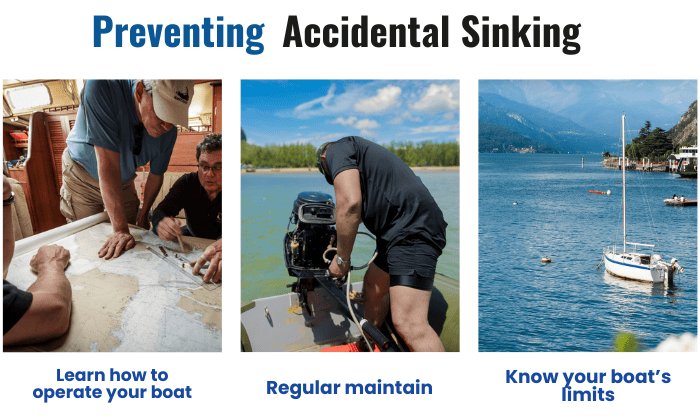
- Get the right know-how and education in operating your specific type of boat.
- Take the time to check your boat and maintain it regularly.
- Know your boat’s limits, especially when it comes to handling bad weather.
Emergency Situations and Salvage Techniques
Every situation is different, and some of these salvage techniques are not guaranteed to work every time.
Still, most of these are concerned with the fundamentals, so it doesn’t hurt to remember and perform them should you find yourself in an emergency.

Quickly activate the bilge pump and other drainage systems your vessel has. Be sure you and your passengers are all wearing the appropriate lifejackets to prepare for the worst.
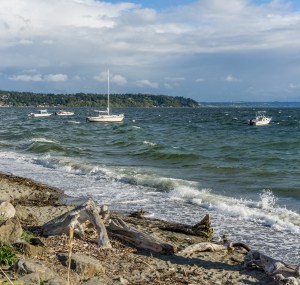
Learn to throttle properly. For instance, it could be worth throttling up to keep your bow raised to cut through the waves efficiently.
Make good use of your boat’s power besides trimming if it’s an especially high-powered outboard, such as this particularly interesting happening at Haulover inlet:
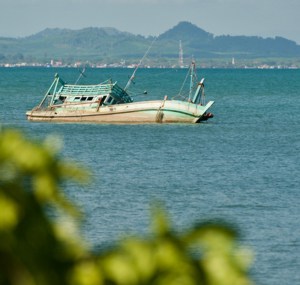
Your vessel can still be saved even if it has capsized. Science-backed tips include:
- Take cargo out from higher up on the ship to make the capsized vessel less stable. This has been found to make turning it upright easier.
- You should control your trim during the uprighting maneuver with weight distribution, displacement, and the right force to apply in mind.
- It’s better to consider the correct torque to pull most ships upright properly. The problem is it varies a lot due to the flow of water into damaged areas and rooms of the ship.
Watching people and nature demonstrate to you how to sink a boat is only funny up to a certain point. I just think about the resources, effort, and time invested in building it, and it doesn’t take long for me to see how tragic any sailboat sinking or model boat sinking can be – even if there are no casualties. Obviously, that’s already sealed if there’s indeed loss of life.
As a boat operator, it’s your responsibility to exert every effort to prevent accidental sinking and remain vigilant in caring for the lives of your passengers.

“My intention from the first day establishing Boating Basics Online is to provide as much help as possible for boaters who want to experience a first safe and convenient trip. So feel free to join us and share your beautiful journeys to the sea!”

Reasons Why Yachts Sink: Key Factors to Know
Welcome to our blog post on the common reasons why yachts sink and how to prevent such incidents. Yachts are prized possessions that require attention and care to ensure they stay afloat and secure. By understanding the key factors that contribute to yacht sinking and taking preventive measures, you can protect your investment and enjoy worry-free voyages on the open water.
Yachts can sink due to various factors, ranging from missing or damaged hose clamps to unsecured engine hoses. Spring rains, broken sea strainers, and leaking stuffing boxes can also pose a risk. Regular maintenance and inspections are crucial to identify and address these issues early on, minimizing the chances of your yacht taking on water.
Key Takeaways:
- Regular maintenance and inspections are essential to prevent yacht sinking.
- Common factors contributing to yacht sinking include missing or damaged hose clamps, unsecured engine hoses, spring rains, broken sea strainers, and leaking stuffing boxes.
- Preventive measures such as inspecting exhaust bellows, checking stuffing boxes, and replacing engine raw-water hoses can significantly reduce the risk of yacht sinking.
- Exhaust bellows play a critical role in sealing water out of the exhaust system and should be regularly inspected and replaced.
- Checking and repacking stuffing boxes can prevent excessive water leakage and potential damage to the prop shaft.
Importance of Inspecting Exhaust Bellows
When it comes to yacht maintenance to prevent sinking , one crucial aspect that yacht owners need to pay attention to is inspecting exhaust bellows. These components play a critical role in sealing water out of the exhaust system, ensuring that your yacht remains afloat and secure.
Exhaust bellows are designed to maintain a watertight seal and withstand flexing, bending, and exposure to water. However, over time, they can become worn out or damaged, compromising their effectiveness. That’s why it’s important to inspect exhaust bellows on a regular basis.
By inspecting exhaust bellows every year and replacing them every three to five years, you can significantly reduce the risk of water entering your yacht and the potential for sinking. These bellows are specifically designed to resist the effects of salt in marine environments, making them durable and reliable.
Regularly checking and replacing exhaust bellows ensures that they remain in optimal condition, maintaining their ability to keep water out of the exhaust system. This preventive measure is essential in yacht maintenance to prevent sinking and will provide peace of mind to yacht owners.
The Importance of Checking Stuffing Boxes
When it comes to preventing yacht sinking , regular maintenance and inspections are essential. One crucial aspect of yacht maintenance is checking the stuffing boxes. These boxes are designed to allow some water into the boat when the motor is in use, but it’s important to keep them properly maintained to prevent excessive water leakage and potential damage to the prop shaft.
Instead of constantly tightening the screw, it is recommended to repack the stuffing box. This involves removing the old packing material and replacing it with fresh packing material. By doing so, you can ensure a watertight seal and minimize the risk of water entering your yacht.
Regularly checking and repacking the stuffing box not only helps prevent water from entering your yacht but also significantly reduces the chances of sinking. It is a relatively simple maintenance task that can save you from costly repairs and potential disasters on the water.
Remember, a well-maintained stuffing box is a crucial component in keeping your yacht afloat and secure.
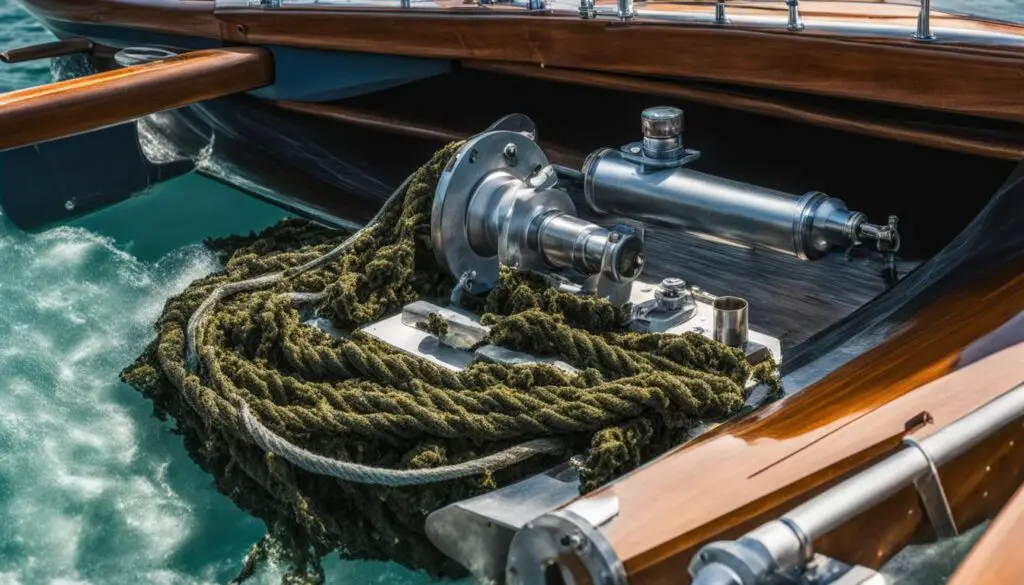
Replacing Engine Raw-Water Hoses
When it comes to preventing yacht sinking , one crucial area that often gets overlooked is the engine raw-water hoses. These hoses play a vital role in the cooling system of your yacht, ensuring that the engine remains at the optimal temperature during operation.
Over time, raw-water hoses can deteriorate and show signs of wear, making them susceptible to leaks or even ruptures. If left unattended, a damaged raw-water hose can result in water entering the boat, especially if the issue is downstream of the raw-water pump while the engine is running.
That’s why it’s important to regularly inspect and replace engine raw-water hoses as part of your yacht maintenance routine. By doing so, you can prevent potential water-related incidents and ensure the safety of your yacht and everyone on board.
Inspecting the condition of your engine raw-water hoses should be done at least once a year. Look for any signs of wear, such as cracks, bulges, or soft spots. If you notice any of these issues or if the hoses are more than a few years old, it’s time to replace them.
When replacing engine raw-water hoses, make sure to choose high-quality hoses that are specifically designed for marine environments. These hoses should be able to withstand the corrosive effects of saltwater and the constant exposure to the elements.
Once you have the new hoses, take the time to properly install them. Ensure they are securely attached and properly clamped to prevent any leaks or dislodgment during operation. Always follow the manufacturer’s instructions for installation to ensure proper functioning.
In summary, engine raw-water hoses are an essential component of your yacht’s cooling system. Regularly inspecting and replacing these hoses when necessary is a critical step in preventing yacht sinking . By maintaining the integrity of your engine raw-water hoses, you can enjoy peace of mind and keep your yacht safe on the water.
Yachts sinking can be a tragic and dangerous event, but with proper maintenance and preventive measures, these incidents can be significantly reduced. Regular inspections and prompt replacements of crucial parts such as exhaust bellows, stuffing boxes, and engine raw-water hoses are key to ensuring the safety of your vessel and those on board.
By staying vigilant and addressing any signs of wear or damage promptly, you can minimize the risk of yacht accidents and sinkings . It is important to practice good yacht maintenance and implement these preventive techniques to keep your yacht afloat and secure.
Remember, prevention is always better than cure. Stay proactive and take the necessary steps to protect your yacht from potential water-related incidents. With proper care and attention, you can enjoy smooth sailing and peace of mind knowing that you have done everything possible to prevent yacht accidents and sinkings .
Why do yachts sink?
Yachts can sink due to various factors, including missing or damaged hose clamps, unsecured engine hoses, spring rains, broken sea strainers, and leaking stuffing boxes.
How can I prevent my yacht from sinking?
Regular maintenance and inspections are crucial to reducing the chances of a yacht taking on water. Some preventive measures include inspecting exhaust bellows, checking stuffing boxes, and replacing engine raw-water hoses.
Why is inspecting exhaust bellows important?
Exhaust bellows play a critical role in sealing water out of the exhaust system. By regularly checking and replacing them, you can prevent water from entering your yacht and reduce the risk of sinking.
What is the importance of checking stuffing boxes?
Stuffing boxes allow some water into the boat when the motor is in use. Repacking the stuffing box instead of constantly tightening the screw prevents excessive water leakage and potential damage to the prop shaft, reducing the chances of sinking.
Why should I replace engine raw-water hoses?
Engine raw-water hoses are crucial for cooling purposes. When these hoses show signs of wear, it is important to replace them promptly to prevent water-related incidents and ensure the safety of your yacht.
How can I prevent yacht accidents and sinkings?
Yacht sinking incidents can be prevented through regular maintenance, inspections, and prompt replacement of crucial parts such as exhaust bellows, stuffing boxes, and engine raw-water hoses. By practicing good yacht maintenance, you can minimize the risk of accidents and ensure the safety of your vessel and those on board.
Source Links
- https://www.triadbellows.com/common-reasons-boats-sink-and-ways-to-keep-your-boat-afloat/
- https://www.coastalbreezenews.com/opinion/columnists/why-did-my-boat-sink/article_18687d53-d99e-59c0-b758-5ddce5699a23.html
- https://williamsburgchartersails.com/captains-log/why-boats-sink
Nicholas Finn
I've been the captain of a fishing boat for over 20 years, and I created Pirateering to share my knowledge of and interest in seafaring.
Recent Posts
Carnival Celebration Sailing Dates Unveiled
Are you dreaming of setting sail on the magnificent Carnival Celebration cruise ship? Well, the wait is over! We are thrilled to unveil the sailing dates for the Carnival Celebration, operated by...
Can Shrimp Live with Snails? Aquarium Harmony Tips
When it comes to creating a harmonious aquarium environment, many aquarium enthusiasts wonder if shrimp can live with snails without any issues. Finding compatible tank mates for shrimp is essential...

What Causes a Boat to Sink and What You Should Know
There’s no worst feeling than walking down to the docks with your fishing pole in hand, only to find your boat is now sitting at the bottom of the water. There are many different ways for your boat to sink. The most common way for a boat to sink is from a faulty bilge pump not working correctly, or a bilge pump float switch becoming stuck with grit and grime.
Here are some other common mistakes that might sink your boat:
Clogged scuppers: If you leave your boat docked year round, dirt, leaves and other debris could plug the scuppers and cause your ship to sink. If the suppers are clogged, water will not be able to empty.
Avoiding routine maintenance: Make sure to perform seasonal maintenance on the boat properly. Failure to replace cracked or worn rubber on the stern-drive, for example, could cause leaks that will sink your ship.
Lightning strike: When lightning strikes a boat that is not properly grounded, the lightning could cause a hole or crack where it leaves your boat hull. If your boat gets struck by lightning, and even though you can’t see any initial damage you should still have it looked it.
Drain plug: Forgetting to put the drain plug back on happens to even the best boaters out there. Before launching, ensure the drain plug installed. It’s also a good idea to keep a spare plug in the bilge.
Rocks and sand: Running aground is not only hazardous for your boat hull, but it can also be dangerous for the occupants onboard the ship. Keep a close eye out. If you do strike an object in the water, take the boat out right away and get it looked at for damage.
Tied up at the dock: Not common, but it could happen, you might have tied your boat up at the dock while the tide was low and as the tide begins to rise, it could trap your boat under the dock causing it to sink. Another scenario is that you tied up your ship while the tide was low, and as the tide went back up, your boat remained tied down as the water went over it.
Weather: Strong winds, causing massive waves could lead to capsizing your ship.
Dock damage: If you are not protecting your boat on the dock bumpers, or boat fenders, then having your boat banging into the dock caused by wind, or waves could crack or puncture a hole in your ship.
Damaged or cracked hoses: Your boat has many different hoses to help with many different aspects of your boat, and if one of those breaks, cracks or come off, then this cause something not to work correctly, such as a bilge pump for example. Always check your hoses.
Damage from another boat: Unfortunately there are bad boaters out there who don’t know what they are doing, or they don’t care, and they are very careless.
Corrosion: Corrosion is one of the leading causing for sinking a ship. By not properly taking care of your boat you could be unknowing, slowly sinking your ship.
What Are Scuppers On a Boat?
Scuppers are located above the waterline and they are used to drain out water from your boat deck, caused by waves going over the bow, or from the rain. Scuppers are also referred to as “self-bailing” because they use gravity to drain out water, as opposed to using your bilge pump.
Most scuppers have flappers which help to keep seawater out but still allows water to drain. Sometimes scuppers can get clogged with leaves or other debris and has been known to sink some ships this way.
Would a Sinking Ship Pull You Under?
Yes, you can be pulled under with a sinking ship. As a ship is sinking it creates a suction as the air in the ship is replaced with water. As the ship sinks it could begin to suck you down with it unless you have enough buoyancy to keep you afloat.
What Do You Do If Your Boat Is Sinking?
If your boat is sinking, there are a few things you should do immediately to ensure everyone’s safety and if you’re lucky, avoid the ship from completely sinking. You’d be surprised how quickly a sinking ship can take on water.
Make sure everyone is wearing a life jacket: Hopefully everyone on board was already wearing a life jacket, but for those who are not, make sure they get one on.
Send a distress call: Using your VHF radio, send out a Mayday call to the Coast Guard on channel 16. Make sure to give them your location, the number of people on board, your boat name, any injuries, and of course the reason for the call. Give them an idea on how long you think you’ll be able to stay afloat. The faster you call for help, the faster you will be rescued, which is why this needs to be a priority. Call for help as soon as you see a problem.
Try to empty out the water: Try to get the bilge pump going, removing as much water as you can. If you have a backup bilge pump, get that running as well. If all else fails, grab a bucket or anything else you can use to scoop out the water.
Personal flotation devices: If you have additional Personal Floatation Devices, make sure to pass them out to the passengers.
Get closer to land: If you are able to, try to get closer to land. Benching your boat in this situation is okay. If you are able to get back to land, don’t forget to keep the Coast Guard informed on where you are, and where you are heading.
Stay with the boat: The best thing you can do is to stay within the boat. Sure, you do need to prepare a life raft as a contingency in case the boat is fully sinking. However, you want to stick with the boat because this is where you can find resources and food. Plus, rescuers will check for the boat first, so you want to be there or nearby at the very least.
Abandon ship: If you have to abandon the ship, don’t forget to grab any supplies and emergency gear you can. If the boat is definitely going under, then make sure to keep a little distance, so you don’t get sucked down with it.
Use a personal location beacon: These are great tools because you can use them to send a light signal for the rescuers. It’s a good idea to have multiple PLB units with you just to be safe. Sometimes (especially during bad weather), it will be very hard for someone to save you, which is why having multiple PLB units is a very good idea.
Get as close to the deck as possible: You want people to see you when it comes to a potential rescue. It’s a lot harder to be detected when you have a boat sink in the ocean and you are at the bottom. However, you do need to stay as calm as possible. Maintaining your calm is the difference between life and death here. You need to control your breathing too and trust your instincts. Focusing on survival is the primary concern, panicking will just lead to problems, and you want to avoid all of that.
As you can see, if your boat begins to sink and you’re in the middle of a lake or in the sea, things could be rather grim. The best thing to do during all of this is to remain calm and focused. Try everything you can to stay safe and if you must go into the water, make sure that you have the proper equipment on you. Every little detail matters here, as you try to stay alive!
Does Boat Insurance Cover Sinking?
For boat owners, the number one claim for losses reported to insurance companies is due to hurricane damage, next on the list is sinking. Most sinking occurs while the boat is tied up to the dock stored in the water. The most common reasons for them to sink is because of some small part failing to work properly, such as hoses or hose clamps, bilge pumps, scuppers being clogged, etc. And most of the time it’s from parts that are found under the waterline.
You will be surprised to know that not all insurance companies will cover you if the boat sunk due to what they would describe as a “lack of maintenance” on your half. This would include any damage as a result of wear and tear, or corrosion. You should double check your policy to see what it says about this. You want to make sure you have “Consequential Damage” coverage, which will cover losses due to faulty parts.
What Is Scuttling?
Scuttling is when you deliberately sink a ship, by allowing water to fill the hull. This is achieved by leaving seacocks or hatches open. Or by drilling holes into the hull below the waterline. In some cases, explosives could also be used. Some of the reasons why someone would want to sink a ship on purpose could be as follows:
- To protect the ship from getting seized by an enemy.
- To create an artificial reef for marine life or divers.
- To avoid the ship from becoming a navigational hazard for other ships.
- To dispose of an old, or abandoned vessel.
Similar Posts
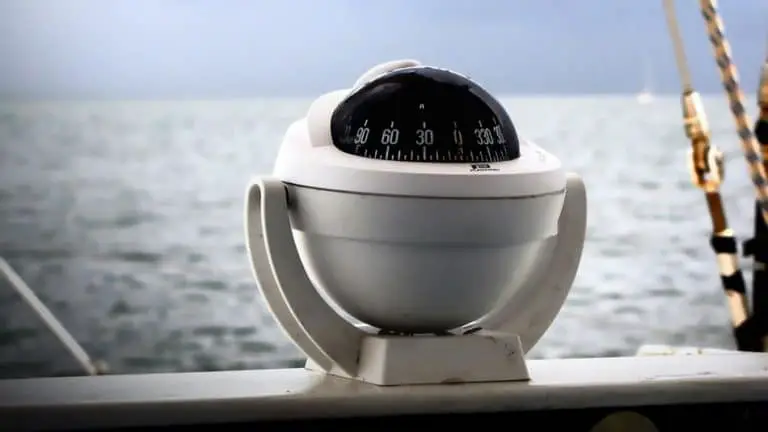
Where To Mount The Boat Compass
The boat compass is imperative for proper navigation, but if you want to read it properly, you have to know where to put it. A lot of people are confused, and they end up placing the boat compass in the wrong place. The compass should be mounted on the ship in front of the helmsman….
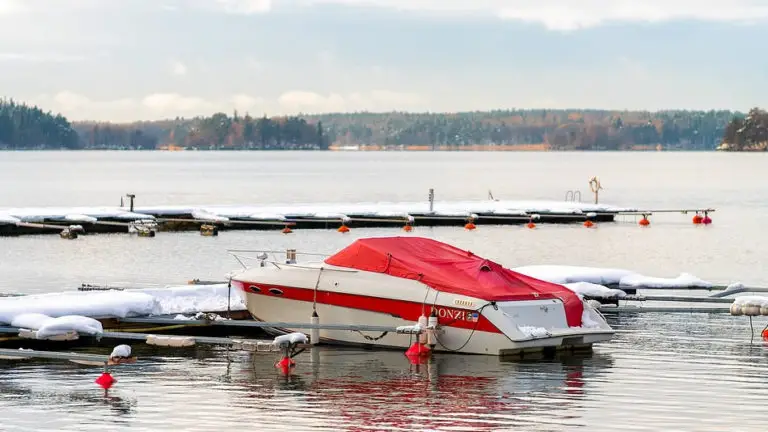
Everything You Need to Know for Winterizing a Boat
With winter right around the corner, the cold air will soon be taking over, causing temperatures to drop below freezing for half of the country. But before that happens you need to make sure that your boat is ready. Without properly winterizing your boat, you run the risk of water freezing and causing the engine…
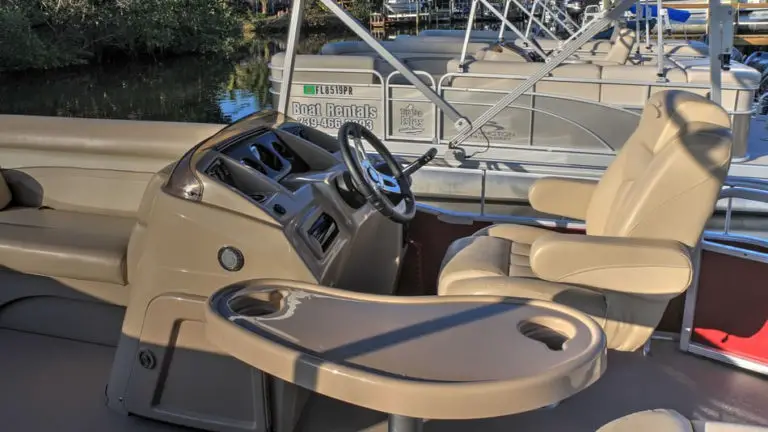
Which Boat Seat is Right For You
When it comes to boat seats there’s more to them then you think. There are many different styles and levels of comfort to choose from, similar to how there are many different styles of couches or recliners you can buy for your living room at home. Picking the right seat for you depends on you…
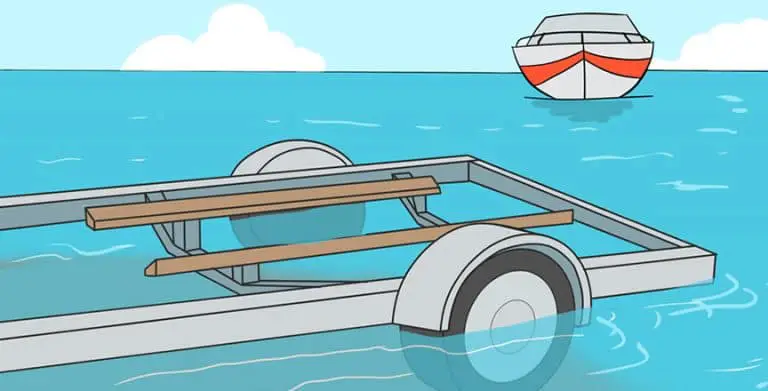
Launching a Boat For The First Time – What To Do and Not Do
Launching a boat is very easy, and it’s a lot of fun once you know what you are doing. Sure, when you are doing it for the first time, it may not be so easy to do, but understanding the system required and practicing it to perfection can make the process of launching a boat…

Everything You Should Know About Boating With a Dog
If you love boating and you’re a dog lover, then you might want to learn how to go boating with a dog. It’s a fun, great way to spend your time with your beloved pet. My son has been asking for a puppy for about 2 years now, and this Christmas we are going to get…
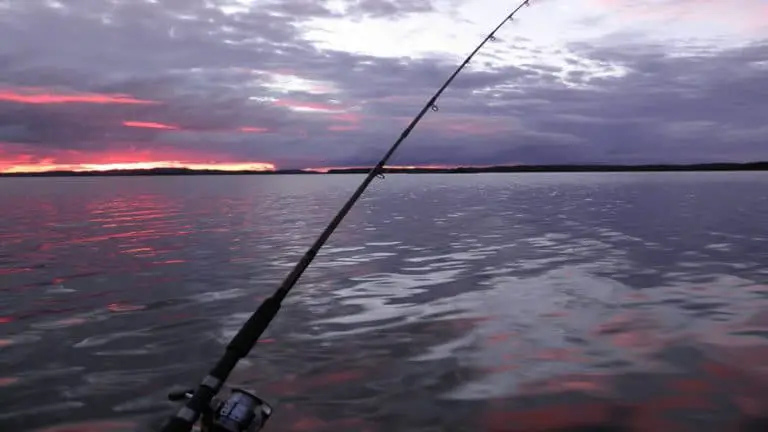
Trolling Fishing – A Complete Guide For Beginners
For a lot of people fishing is an art, and finding the right method to catch a lot of fish can definitely take a while. But then again some methods are better than others. In many cases trolling is widely known as one of the best ways to start fishing, but for some people, it’s…

- CLASSIFIEDS
- NEWSLETTERS
- SUBMIT NEWS

Why Boats Sink (and how to keep yours afloat)
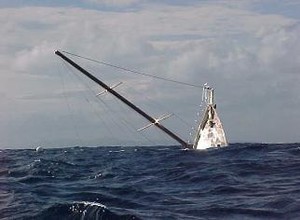
Related Articles


- David Pascoe
- All Articles (over 180)
- Mid Size Power Boats
- Buyers' Guide to Outboard Boats
- Surveying Fiberglass Power Boats (2E)
- Marine Investigations
- Domestic (USA)
- International
- Privacy Policy
- All Articles
- Order Books

- Boat Reviews
- Buying a Boat
- Cores & Structural Issues
- Marine Engines
- Maintenance & Repairs
- Hull Blisters
- Marine Surveying
- Insurance Issues
- Boat Handling & Boat Safety
- Hurricane Preparations
- Fuel Issues

Read Online
Full Chapter One
How to Keep Your Boat From Sinking
A simple self-survey can prevent big trouble, by david pascoe.
Tens of thousands of boats of all types and sizes sink every year, most of them at their dock. The exact number is not known because there is no agency that keeps statistics. But just ask any marine insurance company and they will tell you that the number is far too high. In fact, sinking is the number one cause of major marine losses, and one of the primary reasons why marine insurance costs so much.
Table of Contents - Show/Hide
Hull design, solving the leaky hatch problem, open transoms, internal systems, reverse siphoning, plastic fittings, insufficient bilge pump capacity, bilge pump failure, battery power, improper wiring.
- Outboard Boat
A Word About Check Valves
This is a subject that most boat owners would probably dismiss as irrelevant. After all, you may reason, boats don't sink very often (wrong) and that's usually because some fool didn't maintain his. If you tend to think this way, I suggest that you read a little further. Remember that if your boat sinks, you are going to encounter some major headaches, whether its insured or not. The loss of personal effects and fuel or oil pollution fines are additional losses which may not be covered by your policy.
Why do boats sink? Its true that a large number of boats sink because people neglect them and allow them to sink. But the primary reason boats sink is due to poor design and the use of inferior materials. In this essay I'll show you how you can perform a simple self-survey that will assure you that your boat is not likely to sink anytime soon.
First, let's deal with bad design. Its also a fact that a nationwide survey of the boat building industry has shown that 64% of all builders do not have a trained designer on staff. That means that a lot of boats are designed by people with less than professional expertise. Another factor is that style has taken precedence over function and practicality, often resulting in boats that are doomed to sink themselves.
The sort of bad design that results in boats sinking breaks down into two categories, basic hull design and internal systems. We'll deal with hull design first.
Hull design problems usually involve boats under 40 feet and more often boats under 30 feet. Obviously, the smaller the boat, the more prone to sinking. It is simply because it can sink so much faster. The most common reason power boats sink is due to improperly designed cockpits. In order to keep people from falling overboard, it is necessary that the gunwale be of a certain height. If it does not come up above the knees of the average sized person, then a person is more likely to fall overboard. For sailboats, the most common cause is improper head installation, sink drains, inadequate bilge pumps and battery systems that don't supply enough power to run the pumps.
In smaller boats such as runabouts and sport fishermen this creates a design problem because the cockpit deck then has to be placed very close to the water line to achieve this height. On the other hand, builders like to make the cockpits "self-bailing" to allow rain water or waves over the stern to drain off. Therefore, they add drain scuppers in the transom. Unfortunately, water can travel in both directions and the water that runs out can also run in, even with flappers in place. And if the cockpit deck is very close to the water line - say a few inches - then any change in trim of the boat can result in the cockpit deck flooding. You may be saying to yourself that the cockpit deck is water tight, but I'll deal with that subject in moment.
The problem here is that people often underestimate how little additional weight it takes to substantially change the trim of a small boat, particularly when placed at the stern to one side. A hundred gallon fuel tank holds 700 lbs. of fuel and can easily change the trim of a 24' boat by at least two inches. If the tank is toward the stern, as it usually is, the change can be even more. Thus, a boat with scuppers as much as 4" above the water line can easily end up with the deck dangerously close to the waterline. Then consider what happens if the bilge pump fails, it rains hard or the boat leaks a little. With most of the weight aft, all the water runs aft and it won't be long before water is coming in through the scuppers and flooding the deck.
I caught this boat in the process of sinking. The white arrow shows where the water is running into the hatch opening. In this case the scupper is only one inch above the water line. The owner rejected my recommendation to close off the scuppers and three months later it sank.
Now consider whether the cockpit deck is really water tight, despite those plastic hatch covers with the little gaskets on the underside (this refers primarily to rectangular hatches and not the round type with screw-on covers which are much better at sealing because they are small). I have conducted my own experiments on whether plastic hatches are watertight. The results proved overwhelmingly that not only are they not watertight, but often can allow large amounts of water to leak through the supposedly gasket-sealed cover. This happens simply because the hatch covers and frames are thin, flimsy plastic that can easily distort, resulting in the gasket not sealing at all.
To make matters worse, dirt and debris falls down into the gap and gets under the gasket when the hatch is opened and replaced without first being cleaned. When this happens, that gasket is only sealing to a layer of dirt which then lets water run through. To make matters worse still, those hatch covers are likely to be located close to the stern for access to bilge pumps, rudders and the like. Under these circumstances, its not difficult to understand why so many of this type of boat sinks.
To check if your cockpit scuppers are safe, first measure the height above the normal water line with tanks full. Subtract 2" if they're near empty. If the height above water is less than 4" you've got a problem. Get three 150 lb. or more persons to stand in one aft corner. Does the cockpit begin to flood with water? If so, your boat is in danger of sinking and you should consider sealing up the scuppers and improving the bilge pump capacity if necessary.
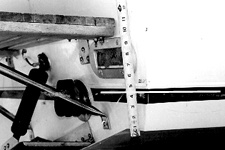
This boat sank three times before anyone found out what the problem was. The scupper is 2.5" above the normal water line which is shown by the white line on the black boot stripe.
The inside view of the scupper (upper right) showing that it is only two inches away from a deck hatch. The owner thought the hatch cover was water tight but tests showed that it leaked as much as 12 gallons per hour. The gasket - as shown by arrow - was jammed with dirt. But even when cleaned it still leaked because the whole thing is thin plastic and distorts easily.
Leaking plastic hatch problems can be fairly easily be solved by simply replacing it with a piece of Lexan (not plexiglas) plastic, bedded and screwed to the deck in place of the plastic hatch. Yes, it will make access to the pump a bit more difficult. With an electric screw driver, it can be opened up in less than a minute, by hand a little longer. Use 3/8" thick material for large openings and bevel the edges sharply so you don't trip on it, and make the seal with silicone - one of the few good uses of this material on a boat. Don't use 5200 or polysulphide as you won't be able to get the cover off. The screw heads should be counter sunk; the screws need to be the stubby, coarse thread type so that they'll have good holding power.
If you give them the finished dimensions, most plastics sellers (the specialty shops) or boat yard can machine the plastic for you. The advantage here is not only will you end up with a water-tight deck or motor well, but you'll also be able to see into the bilge without opening a hatch. It may be less pretty, but what's uglier than a sunk boat?
or boats with no transoms have been appearing on the market with more frequency lately, and many of these are just accidents waiting to happen. A boat without a transom cannot reasonably be called seaworthy unless the internal compartments of the hull are made absolutely watertight. This is almost never the case because the builders never put absolutely watertight hatches in the decks.
They make a mistake by ignoring the probability that at some point in time the vessel will encounter circumstances where waves are crashing over the nonexistent transom, flooding the deck, and thereby endangering the vessel and its passengers. Builders of such boats don't have the foresight (which they should have) to consider what would happen if such a boat lost power while navigating a dangerous inlet, or breaks down while at sea. Under these circumstances, the lack of a transom becomes very dangerous. Even large sport fishermen with large, open cockpit scuppers or non-sealing transom doors have gotten into trouble under such conditions. If you are the owner of such a boat, you had better think carefully how you use it.
By far, improper design or use of poor quality materials is the cause of the vast majority of boat sinkings. Internal system failures fall into three main categories:
Reverse siphoning resulting from errors in plumbing design.
Insufficient bilge pumping or battery capacity.
Failed through hull fittings and hoses.
Most prevalent of this type are the installation of a bilge pump or shower sump pump with a thru- hull outlet located close to the water line and without any riser in the discharge hose at all. Again, because of changes in trim, or wave action against the hull, water flows back into the hull through these openings. Despite hundreds of years of design knowledge about this problem, many builders continue to make these same mistakes every year. All discharge outlets close to the water line must have a riser in the discharge hose. 18" is the recommended height, but in no case should be less than 12". If your boat has less than this, its a fairly simple matter to increase the hose length and extend the riser loop a little higher. All shower sumps and bilge pump discharge outlets should be checked for adequate riser height.
Its hard to imagine how a builder of a $100,000 boat can justify the use of twenty dollars worth of plastic through hull fittings, but they usually do. Every year I catch 30-40 boats with broken plastic fittings that are in danger of sinking them. The first generation of these cheap fittings were totally vulnerable to degradation by ultraviolet light (sunlight). Once this became widely known, a second generation of plastic fittings appeared that would last considerably longer, the first generation often failing within just a couple years. Unfortunately, these don't last long enough. A third generation so far seems to be fairly resistant. Unfortunately, the manufacturer don't put their name on the fittings (I wouldn't either if I was selling these things) so I can't tell you who makes them.
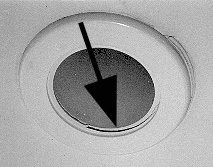
This plastic fitting was not a year old when it cracked. It was poorly designed and could not withstand the weight
In any case, all three grades are in existence and continue to be used. Since these little devils are usually located near the water line, they need to be checked annually when your boat is hauled. Typically, they crack and break off behind the outer flange, so don't trust just looking at them. To test for strength, insert a screwdriver blade in the hole and, with moderate pressure, pry in several directions. If it breaks off then you know what you have to do. And if one is bad, you may as well figure that all of them will break soon and replace them all.
Also watch out for the use of ribbed, thin-wall plastic hose. This material is subject to breakage, particularly when a there is an unsupported length attached to the thru-hull nipple that can bounce around when the boat is underway. The material usually fatigues at the point where it mates to the nipple. The way to test is to pull and twist the hose to see if it cracks or breaks.
Far too many power boats 35' and under have both too few bilge pumps and inadequate battery power to run them. And for some strange reason, sail boat builders and owners tend to think that only one bilge pump is necessary, no matter how large the yacht is. In fact, the vast majority of 40' sailboats have only one bilge pump. If you think that's enough, consider the next point.
When bilge pumps fail, most people blame the pump. On the contrary, analysis of hundreds of insurance claims shows that when boats sink, the pump usually failed because of a faulty system before the boat sank. Here's why:
Due to dirty bilges, float switch sticks in up or ON position, burns up pump or wears down battery.
Bilge pump switch is not adequately secured, comes loose and lays on it's side, causing pump to run continuously, depleting batteries or burning up the pump.
Debris in bilge prevented float switch from operating. Even oil sludge can do this.
Wire splices to pump and float switch too low in bilge, or get wet from other water sources such as leaking deck hatches, causing corrosion to the wire connections and resultant failure of the pump. Bear in mind that corroded connections can cause high resistance in the wire that can cause the pump to fail.
Make sure that you have adequate battery power and pumping capacity. For every two pumps, there should be one back up because pumps are notoriously unreliable. That's why in no way could one pump ever be considered acceptable. More and more builders are recognizing that the primary pump (the one at the deepest point of the bilge) needs to have a backup in the even of failure. Indeed, that is just common sense.
Be sure that wire splices are as high up as possible and that they don't get wet from other sources. Remember that bilge water bounces around while underway. Coating connections with silicone sealer won't help. If the area routinely gets wet, install a gasketed plastic junction box. Good ones are available even at Home Depot! Carlon makes a nice one that sells for under $5.
Make sure that the pump discharges have adequate risers. But remember, especially sail boat owners, that too much riser greatly affects the pump's capacity. A pump located three feet below the waterline, with a 24" riser (sailboats need this much), for a combined rise of 5 feet, will have its pumping ability reduced by more than 50%. For that reason, sailing yachts need higher capacity pumps. The average Rule 1500 usually just won't do. Go to a 3500. And remember that pushing water uphill takes more battery power, too!
A bilge pump discharge hose that is lacking a riser loop, installed this way by the builder. Only 3" above the water line, it sank the boat. This mistake is very common but can be easily corrected.
Keep bilges clean, especially free of things like rags, paper, string or crumbling foam insulation. This stuff is deadly around float switches. Make sure the wires aren't tangling up in the switch.
For power boats, remember that bilge water rushes forward and back while underway. This rush of water can damage float switches. For the stern pump, place the switch with the float facing aft so that the rushing water won't catch the flapper and tear it off. Use the covered type switch in the center bilge at forward areas. See related article All about Bilge Pumps .
If you've got a 30 footer or larger and are running only a pair of 60 A.H. car batteries, you don't have enough power for your pumps. This is mainly a problem for gas powered boats since diesel power is always accompanied by large batteries.
I rate batteries by taking their total ampere hour (A.H.) capacity when new and dividing that in half. Batteries age quickly and this is really about all you can expect. As near as I can tell, amperage ratings of pumps seems to be for pumping water sideways, not for pumping against three feet of static head pressure. I've measured 6 amp pumps pulling 12 amps under load.
So how long can you expect a pump to run under load on an aging 60 A.H. battery? A couple hours at best, probably a lot less. At minimum you should be running a pair of 90 A.H. true marine batteries in parallel. Pumps should be set up to run off the ALL batteries position on your master switch setting, never just one. For that reason, pumps should never be wired to a battery direct as it will only have the benefit of one battery power. See related article Solving Chronic Battery Problems and Battery Basics
Remember that all aspects of your system must be maintained for it to work properly. Don't ignore it for two years and expect it to keep functioning. Your pumping system should be thoroughly checked out annually.
Far too many boats are wired so that shutting off the main power, either the main breaker, or the battery switches, shuts off the bilge pumps . Its truly amazing how many builders of expensive yachts make this amateur mistake. That means that if you shut off the power when you leave the boat (even though you're left pump switches on) you inadvertently turned off your pumps. Testing for this is simple: just shut off the main DC breaker and turn the battery switches to OFF, then lift the float switch and see if the pump works. If not then its wired wrong. See related article Tips on Electrical System Use and Maintenance
Outboard Boats
Outboard boats owners should be especially alert to the following dangers:
Motor wells are intended to keep water out of the hull. If the well is full of holes, it won't achieve that purpose. Watch out for inspection ports located at the bottom of the well that will leak and possibly sink the boat. Make sure that the gasket is in good condition and the mating surface is clean. Ideally, these things should not be there. Replace it with Lexan as described above.
Openings for control cables and steering within the motor well should be located above the level of the transom cut down for motor mounting. If the openings are below this, they must be sealed and relocated higher up. A motor well should be absolutely water tight.
If cockpit scuppers threaten to sink the boat, close them up. Better to rely on the bilge pumps than to run this risk.
The vast majority of sailboats have one small bilge pump located in the keel sump, often under an engine and usually where it cannot be reached for servicing or testing. Battery power is usually not a problem, but pump failure is. The small pump for normal dewatering is fine, but I recommend that every boat should have a large back up pump , at least a Rule 3500 or similar. This pump should be located near the top of the keel sump so that it activates in the event the primary pump failures. In this case it would be an emergency and the larger pump would be better able to handle it.
Check your sink drains and make sure that the sink is well above the water line. Will the sink go under water when the boat is heeled over? Also watch out for die cast zinc alloy fittings on the underside of the galley sink that can corrode and fall apart. This can allow the hose to detach and fall below the waterline.
For heads, open the water valve and start pumping vigorously to get the water flowing. Then stop and leave the pump handle in the UP position. Does water continue to flow into the bowl without stopping? If so, you've got a head installation that can sink your boat.
The use of check valves can be very helpful in preventing reverse siphoning. But only if you know what you're doing. Improperly installed valves can make the problem worse, rather than better. Heavy bronze valves should never be used with low voltage pumps because the high pressure required to activate the valve only serves to severely reduce the pump's capacity. If you need to install a check valve - as is often useful when a very high riser is involved - I recommend that the plastic type manufactured by Rule Industries be used. That's because it takes very little pressure to open and close it. And remember that the position in which the valve is situated makes a difference as to how it functions.
Text and photos copyright 1997, D. H. Pascoe & Company, Inc.
Marine Investigations: Chapter 7 - Sinking Due To Rain

David Pascoe - Biography
David Pascoe is a second generation marine surveyor in his family who began his surveying career at age 16 as an apprentice in 1965 as the era of wooden boats was drawing to a close.
Certified by the National Association of Marine Surveyors in 1972, he has conducted over 5,000 pre purchase surveys in addition to having conducted hundreds of boating accident investigations, including fires, sinkings, hull failures and machinery failure analysis.
Over forty years of knowledge and experience are brought to bear in following books. David Pascoe is the author of:
- " Mid Size Power Boats " (2003)
- " Buyers’ Guide to Outboard Boats " (2002)
- " Surveying Fiberglass Power Boats " (2001, 2nd Edition - 2005)
- " Marine Investigations " (2004).
In addition to readers in the United States, boaters and boat industry professionals worldwide from nearly 80 countries have purchased David Pascoe's books, since introduction of his first book in 2001.
In 2012, David Pascoe has retired from marine surveying business at age 65.
On November 23rd, 2018, David Pascoe has passed away at age 71.
Biography - Long version
Maintenance, Repair Articles At A Glance
- All about Bilge Pumps
- Attaching Hardware to Your Boat
- Battery Basics
- Corrosion in Marinas
- Dealing With Leaks
- Diesel Maintenance, Or Lack of It
- Electronics Outside
- Haul Out Basics
- How to Install an Aluminum Fuel Tank
- How to Prevent Your Boat from Sinking
- Tips on Electrical System Use and Maintenance
- How to Repair Window Leaks
- Is Your Boat a Leaky Tiki?
- Maintaining Stern Drives
- Maintenance Fundamentals Part I : Engines
- Myth of Condensation in Fuel Tanks, The
- Preventing Rot in Encapsulated Wood Structures
- Repairing Diaphragm Pumps
- Repairing Rotary Vane Pumps
- Solving Chronic Battery Problems
- Tips on Painting Fiberglass Boats
- Winter Lay Up
- Washing Down
- From Other Category
- Exhaust Risers (from Buying a Boat Cat.)

- What is Pre-Purchase Survey?
- Business Practices and Client Relations
- Sound vs. Seaworthiness
- Hull and Its Structure
- Surveying the Hull
- Using Moisture Meters
- Stress Cracks & Surface Irregularities
- Deck & Superstructure
- Drive Train
- Gas Engines
- Fuel Systems
- Exhaust Systems
- Electrical Systems
- Plumbing Systems

- The Marine Investigator Read Online Full Chapter 1
- The Nature of Investigations
- The Nature of Evidence
- Marine Insurance and Issues of Law
- Bilge Pumps & Batteries
- Finding the Leak
- Sinking Due To Rain
- Fire Investigations
- Machinery Failure Analysis
- Fraud Investigations
- Interrogation Techniques
- Deposition & Court Testimony

Published by: D. H. Pascoe & Co., Inc. Articles, Images: Copyright © 1997 - 2018 David H. Pascoe All rights reserved. Articles, Images: Copyright © 2019-2022 Junko A. Pascoe All rights reserved. Web site design & developement: Copyright © 1997 - 2023 Junko A. Pascoe All rights reserved. Web site: Maintained by Junko A. Pascoe

How Often Do Sailboats Capsize & Sink?

Last Updated by
Daniel Wade
May 12, 2023
Key Takeaways
- Try to stay in the boat’s center for the best stability while sailing on smaller boats
- Make sure you have a working bilge pump before heading out to sea
- Many boats sink at the boat ramp due to collisions or other pilot errors
- A sunken boat cannot be saved without additional assistance
- Breaking waves could be dangerous in rough conditions that help capsize boats
Sailboats are designed to float but there are times when disasters happen that could change that. So how often do sailboats sink?
Each year on average, roughly 200 sailboats capsize and sink, which is less than you would imagine for the amount of boats on the water. If you are dinghy sailing, these typically capsize but do not sink. According to US Coast Guard reports in 2020, there were 211 boats that capsized and sank.
After careful analysis, boat sinking is a lot less common compared to a hundred years ago. Thanks to proper education and technology, sailors have adapted to safer sailing experiences.
Table of contents
What is the Likelihood of a Boat Capsizing and Sinking?
Boats capsize and sink for a variety of different reasons. If you know how to avoid those situations, you will likely be much safer and still have a working boat. Boats can capsize and only a select few are able to keep the boat from sinking.
US Coast Guard Statistics
The US Coast Guard reported 211 sinking boats in the year 2020. These numbers help shape an average for the number of sinking boats within a year.
Most of these accidents were user error, while a handful happened at the dock. The point is, no boat is safe from capsizing and sinking.
Type of Boat
When looking at ships, these are much higher sinking occurrences at two a week. There are a lot of vessels that go missing, so it is believed that many are sunk. It is estimated that thousands of boats sink each year but the type of boat matters in those statistics.
Understanding the Types of Capsizing That Leads to Sinking
There are two types of capsizing that boaters need to know. These are referred to as a knockdown or a turtle.
Knockdowns are also called flips in dinghy sailing. This is when the sails and mast are touching the water and the boat rests at a 90 degree angle.
Dinghies and catamarans can recover fairly easy from this situation. On a dinghy, the crew members should stand on the centerboard to help balance the weight of the boat. For a small catamaran, you would need a line on the upper hull to help pull.
Boats with keels will act a bit different depending on the situation in a knockdown. The crew can often add their weight to the side needed, but water pouring in certain spots may be too much to overcome.
A turtle is when a boat completely turns upside down and is likely going to sink. Dinghies and small catamarans can still turn things around from this situation, provided the crew is able to move the boat to a 90 degree angle from the added weight to the centerboard.
If you have a boat with a keel, this will need further assistance from a professional to help right the boat. Some boats are self-righting, but it varies on the type of keel and boat design. With any other type of vessel that turtles, you will likely need further assistance.
What Causes a Capsized Boat?
Many factors influence a boat to capsize and sink. Most of these should be common knowledge, but it is important to point out these situations so that sailors are better informed.
Flooding is the number one cause for ships to sink. As more water enters the boat, the more weight it adds.
Depending on where the water is coming in at will affect the weight distribution of the vessel. This causes the boat to lean or dive down quickly.
Collisions with an object or the ground can cause water to flood the boat. Depending on how bad boat hits something makes a difference on how fast the boat will take on water. This also affects the weight distribution, making the boat less stable and to potentially flip.
Larger boats are more susceptible to collisions since they require more time to safely come to a stop. Keep in mind that you can still do the same in a smaller boat.
Stability has Suffered
Multihull sailboats have much better stability than monohull boats. Sailboats with keels are also more stable.
If your boat is neither of those, you likely have less stability and could potentially capsize. With dinghy sailing, these are designed to move back and forth in the wind. This causes the boat to flip since it has less stability than others boats.
Bad Weather
Poor weather is the main cause of a sailboat or any vessel to capsize and sink. Since the ocean can be unpredictable in combination with weather, it creates a scary situation if the weather happens to be bad the day of sailing.
Pilot Error
A lot of times people make mistakes whether they are influenced by alcohol or something else. This is no different for operating a sailboat and the pilot makes a mistake.
Sometimes a pilot misreads the current situation on how rough the waves are and continues to sail when near a port. Other times it means failure to respond to dangerous situations due to lack of experience on the water.
Avoiding Preventative Maintenance
Sailboat owners need to routinely make adjustments and make sure the boat is working properly. Skipping out on maintenance could mean your boat does not function the correct way and you could capsize during unplanned conditions.
How to Prevent Capsizing and Sinking
A boat capsized is not a pretty sight while sailing and hopefully you never have to experience it. A lot of people believe that proper care can make sailboats unsinkable.
However, that is simply not true. Here are some tips to stay afloat in your sailboat and how to mitigate the risk.
Leave the Centerboard Alone
In boats that have a retractable centerboard you should always leave it all the way down while the sails are up. In the event you have run aground do not raise the centerboard. If you need to move the centerboard at all you must lower the sail to help lower your risk of capsizing.
Stay Seated
You should try your best to stay seated in smaller boats that tend to have a lot of influence in weight shifts. The weight shift messes with the boom or other parts of the boat needed to navigate safely.
Be Aware of the Wind
You should always keep your head on swivel for the latest wind changes. Sailors that can effectively monitor the wind and how it affects your boat will be one step ahead of any potential capsizing danger.

What to Do if Sailboats Tip Over?
No matter if you are a yacht owner or pilot on a sailboat, there are ways to help prepare for when a boat is tipping over. If your sailboat were to tip over, you should:
- Try to account for everyone that was on board
- Grab life jackets if you are already not wearing them
- Enter sailboat from bow or stern and never the sides
- Sit at bow and help bail water if you can (if applicable)
- Call for help
Related Articles
I've personally had thousands of questions about sailing and sailboats over the years. As I learn and experience sailing, and the community, I share the answers that work and make sense to me, here on Life of Sailing.
by this author
Learn About Sailboats
Most Recent

Affordable Sailboats You Can Build at Home
September 13, 2023

Best Small Sailboat Ornaments
September 12, 2023
Important Legal Info
Lifeofsailing.com is a participant in the Amazon Services LLC Associates Program, an affiliate advertising program designed to provide a means for sites to earn advertising fees by advertising and linking to Amazon. This site also participates in other affiliate programs and is compensated for referring traffic and business to these companies.
Similar Posts

Discover the Magic of Hydrofoil Sailboats
December 11, 2023

Hunter Sailboats: Are They Built for Bluewater Cruising?
August 29, 2023

What Is A Furler On A Sailboat?
August 22, 2023
Popular Posts

Best Liveaboard Catamaran Sailboats
December 28, 2023

Can a Novice Sail Around the World?
Elizabeth O'Malley
June 15, 2022

4 Best Electric Outboard Motors

How Long Did It Take The Vikings To Sail To England?

10 Best Sailboat Brands (And Why)
December 20, 2023

7 Best Places To Liveaboard A Sailboat
Get the best sailing content.
Top Rated Posts
Lifeofsailing.com is a participant in the Amazon Services LLC Associates Program, an affiliate advertising program designed to provide a means for sites to earn advertising fees by advertising and linking to Amazon. This site also participates in other affiliate programs and is compensated for referring traffic and business to these companies. (866) 342-SAIL
© 2024 Life of Sailing Email: [email protected] Address: 11816 Inwood Rd #3024 Dallas, TX 75244 Disclaimer Privacy Policy
- International edition
- Australia edition
- Europe edition

What happens when a huge ship sinks? A step-by-step guide to averting disaster
From the Ever Given blocking the Suez, to the Costa Concordia cruise ship hitting a reef, what exactly do you do when a vessel comes to grief – and how do you prevent catastrophic pollution?
A t 3:24am in the Atlantic Ocean, a catastrophe unfolds across the moonlit waters. The MS Seascape – a 200-metre, six-storey cargo vessel carrying 4,000 new electric vehicles – is pushed by swells into a coral reef. The ship grinds to a sickening halt, begins listing violently to the side and capsizes on to the reef a few kilometres from port.
The coastguard receives the distress call. Helicopters lift the flailing crew members to safety, while support boats unload any cargo that hasn’t already tumbled into the sea. It’s urgent – lithium ion batteries in electric cars risk exploding and most of the vehicles are stored in the hold. If fire breaks out, the vessel will become a giant pressure cooker.
Although our MS Seascape is a hypothetical ship, its situation is far from uncommon. In 2021, 54 large vessels either sank, ran aground or went up in flames and these behemoths are more likely to cause catastrophe when things go wrong.
What is the Shipwrecked series?
There are 3m lost vessels under the waves, and with new technology finally enabling us to explore them, Guardian Seascape is dedicating a series to what is being found: the secret histories, hidden treasures and the lessons they teach. From glimpses into storied wrecks such as the Titanic and Ernest Shackleton’s doomed Endurance, to slave vessels such as the Clotilda or Spanish galleons lined with plundered South American gold that confront us with our troubled history, shipwrecks are time capsules, holding clues to who we are.
But they are also ocean actors in their own right, home to huge colonies of marine life. They are victims, too, of the same threats faced by the ocean: invasive species eating away at their hulls, acidification slowly causing them to disintegrate. Shipwrecks are mirrors showing us not just who we’ve been, but what our future holds on a fast-heating globe.
The pull of these wrecks has been a boon for science, shedding light on a part of the planet that has been shrouded in mystery. “If shipwrecks are the sirens that lure us into the depths, they encourage exploration into what truly is the last frontier of the planet,” says James Delgado of shipwreck company Search Inc. “A frontier that we don’t really know much about.” Chris Michael and Laura Paddison, Seascape editors
Abandoning the ships is rarely an option. The risks of oil and fuel leaks mean it is now standard practice to try to salvage them and fix any environmental damage. But the costs are astronomical: the Costa Concordia, which ran aground off Genoa, Italy in 2012, became the most expensive wreck removal in history, costing more than $1bn , and taking 350 salvage workers almost three years.
There’s no cookie-cutter approach to salvage: each operation will vary depending on location, water depth, weather, equipment and sensitivity of the surrounding environment.
So what to do with our hypothetical MS Seascape? Let’s get started.
Step 1: Contain spills and remove fuel
The risk posed by MS Seascape, loaded with potentially explosive car batteries, is not dissimilar to that of the 200-metre Felicity Ace, which caught fire in the mid-Atlantic before sinking to an unsalvageable 10,000ft: it is suspected that the 281 EVs onboard may have sparked, or at least accelerated, the blaze.
To avoid this fate, a local salvage company gets involved, one of a few dozen operators around the world poised to rush to the scene of a maritime disaster. Its first objective is to save the vessel and return it to service.

A vessel’s location has a huge bearing on how quickly the operation unfolds. The Rena, a container ship that grounded off the coast of New Zealand, had to wait several weeks for equipment to arrive from Singapore – during which time the hull broke apart.
At this stage it is too early to tell how much impact the MS Seascape hull has sustained. In the morning, in calmer conditions, the salvage crew traces a skirted boom around the vessel to capture any fuel and hazardous wastes.
In the meantime, a specialist team begins bleeding its 20-plus tanks of more than 300,000 gallons of fuel, as well as potential pollutants such as lubricants, gases and oily water and sludge .
They drill through the ship’s exposed double-walled steel exterior into the fuel bunkers below, inserting pipes to pump out waste to a waiting vessel. Divers are dispatched to enter the ships’ interior to drain the remaining submerged tanks. This is a delicate task: removing fuel can destabilise the already precarious ship, so this process can take days, possibly weeks.
Suddenly, a crisis: after days of being strained against the reef by the current, stress fractures appear along the hull. They could break the ship apart. This dashes hopes of returning the MS Seascape to service – the cost of recouping would now be more than the value of the ship itself.
The mission transitions from salvage operation to wreck removal and the real work begins.
Step 2: Slice the ship apart
After 10 days, the ship’s fractures threaten to split the wreck. The team of hundreds of engineers, crane operators, firefighters, labourers, divers and architects, must move quickly.
They cut away the accommodation block to declutter the deck and simplify the process. One option to break the ship is to use explosives, such as those applied to the MSC Napoli, a giant container vessel grounded off England’s south coast in 2007 and blasted into two sections. But this would be catastrophic for the fragile coral ecosystem beneath the wreck.
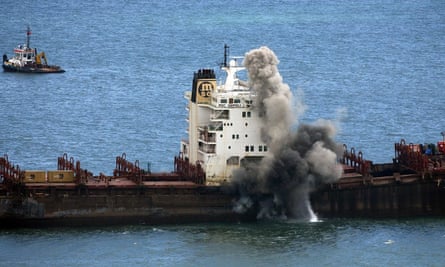
Instead, the removal team opts for a thick cable of diamond-encrusted wire that can slice through inches-thick steel. The saw is fitted into a custom-built frame lifted by cranes and ferried to the wreck site. Over two days, its two legs are rigged into the seafloor on either side of the wreck. Within the frame, the wire is cycled at high speed through a system of pulleys and lowered, guillotine-like, into the metal hulk, shearing through it with an ear-splitting roar.
It can take up to 12 hours to cut a single cross-section, but the saw’s surgical precision means it only grazes the reef below. It can also slice between parked cars in the lower decks so that fewer tumble out into the sea, and around the fuel tank.
Fuel isn’t the only environmental threat: ships contain an extraordinary load of hazardous material , such as antifouling chemicals and lead embedded in paint, asbestos in the walls, and mercury and polychlorinated biphenyls (PCBs) wound into the electrics of older ships. These pollutants will gradually ooze out of hulks left to rot in the ocean. One sunken German warship is still leaching chemicals into the North Sea after more than 80 years.
Step 3: Remove sections and take them ashore
The MS Seascape is now encircled with vessels and equipment ready to intervene as pieces of the wreck are shorn off. With the ship’s bow resting on the reef, but its stern threatening to fall to the ocean floor when cut loose, the team has a two-pronged plan.
First, the floating sheerleg: a huge crane on a buoyant platform, capable of lifting 7,000 tons. It is a mechanical island with an accommodation block for the dozens of workers who will be at sea for weeks dismantling the wreck.
The crew will slice the ship into eight pieces. Starting with the bow, each slice is drilled with holes through which cables are threaded, then hoisted up by crane. Piece by piece, the ship is carefully loaded on to waiting barges and ferried away.

The stern requires a different approach. Before the rear segment is cut free, support vessels weld enormous air-filled metal boxes called caissons to its exposed starboard side. These are partly filled with water, adding weight that rotates the stern upright when it is cut free. As the stern is righted, caissons are attached to its port side, too. On both sides these are filled and emptied of water, to reach the perfect level of buoyancy to keep the stern afloat. Once free and released on to the water, the stern is then tugged to port.
Not all wrecks would need the same approach. Some with relatively minimal damage, such as the Costa Concordia , can be patched up, fully refloated with caissons, then towed away. Others have to be dredged up from the seafloor, such as the X-Press Pearl , whose nitric acid load caught fire off Sri Lanka in 2019 and caused the ship to sink to 68ft – along with its cargo of 50bn plastic “nurdles” , which swamped Sri Lankan beaches.
The X-Press Pearl needed dozens of cables to winch it up from the seafloor, but the monsoon season stalled the mission, dragging out a process already costing the vessel owners $40m in environmental compensation claims from the Sri Lankan government.
Even with a well managed wreck such as the MS Seascape, some spillage is unavoidable. Divers, aided by remotely operated underwater vehicles, locate lost cars and other metal debris, feeding this information to a barge fitted with underwater magnets and mechanical grabbers.
Two months after the ship ran aground, no trace remains of the MS Seascape in the ocean – but the work continues.
Step 4: Strip down the ship
Back on land, the pieces of the MS Seascape wait to be broken down. The vessel was flagged to the EU, meaning it must be dismantled in one of 46 regulated yards spread across Europe, Turkey and the US.
This means it will be dealt with under stricter requirements than vessels in south Asian shipbreaking beaches, where 70% of global ships end their seagoing lives. Looser regulations in these locations result in dozens of labourer deaths annually, and untold environmental impacts as pollutants leach on to beaches and into the sea .

However, at the dry dock in Italy where most of the MS Seascape ends up, waste is supposed to be contained. Over several months, the ship is stripped back to basics: sheets of asbestos, wiring, equipment and furniture are removed until only the steel husk remains.
This is where most of the ship’s value now lies. Efficient smelting operations can recycle almost all a ship’s steel: about 90% of the material in the Costa Concordia was recycled.

Back on the reef, rehabilitation has begun. The water is monitored for residual pollutants, and teams begin planting nursery-grown coral into the shattered reef. This will take years: a decade after the Costa Concordia capsized, damaged seagrass meadows are still being restored.
Now reduced to molten steel, some of the MS Seascape might be forged into yet another ocean-going colossus. As shipbuilding ingenuity grows, so will the effort, costs – and the innovation – required to salvage these leviathans at sea.
- Shipwrecked
- Shipping industry
Most viewed

11 Tips to Prevent Boat from Sinking
One of the worst fears a boat owner can have is their boat sinking. Boat sinks can happen for a variety of reasons , but often they are preventable. In this article we will discuss some tips on how to prevent your boat from sinking. First and foremost, it is important to keep your boat well-maintained.
Check the bilge pump regularly to ensure it is functioning properly, and make sure all drainage plugs are in place. It is also important to have a good understanding of the safety equipment on your boat. Make sure all life vests , Coast Guard approved emergency lights, fire extinguishers and other safety equipment are in working order.
How to prevent boat from sinking
there are many ways you can prevent your boat from sinking. Some of the given below and you must remember and act those things thoroughly:

1. Inspect your boat before you set sail
When you take your boat out on the water, you want to be sure that it is safe and in good condition. One way to do this is by inspecting it before you set sail. This will help you to identify any problems that could lead to the boat sinking.
Some things you should look for include leaks, cracks in the hull or deck, and damage to the propeller or rudder. If you find any issues, be sure to address them before taking the boat out on the open water. This can help prevent a disaster from happening and keep you and your passengers safe.
2. Check the weather conditions before you depart
The weather conditions play a significant role in the sailing process. Skippers must check the weather conditions and forecast before they depart in order to prevent their boat from sinking. Winds and waves can easily overturn a boat, so it is important for skippers to know what to expect before they leave.
Tropical storms can cause boats to sink very quickly, so it is imperative that sailors take all necessary precautions before heading out into bad weather.
Sailing in inclement weather can be dangerous, so it is always best to be safe rather than sorry.
3. Check bilge pumps and blowers
Ships can sink for a variety of reasons, from a hole in the hull to an engine failure. One of the most common reasons for a ship to sink, however, is a problem with the bilge pumps and blowers. These systems work together to keep the ship afloat by removing water from the bilge area. If either of these systems fails, the ship can quickly sink.
That’s why it’s important to check these systems regularly and make sure they’re working properly. If you notice that your bilge pump or blower isn’t working correctly, call a mechanic right away. Failing to do so could result in your ship sinking and losing all your cargo.
4. Anchors: use anchors to keep the boat in place
When a boat begins to sink, the natural inclination is to move away from the vessel in order to avoid being pulled under. However, this often results in the boat becoming more unstable and quickly sinking.
One way to prevent this from happening is to use proper anchors to keep the boat in place. This will help to keep it from tipping over or sinking completely. If there are people on board, they can then safely exit the boat without having to worry about being pulled under by the current.
5. Inspect your boat for leaks
If you’re a boat owner, it’s important to inspect your vessel for leaks regularly. Small leaks can turn into big problems if not addressed in a timely manner. A boat that’s sinking is easy to spot – it will be taking on water quickly and will likely be listing to one side or the other. If you notice any signs of a leak, take action right away to prevent your boat from sinking.
One common place for leaks to occur is the hull. Check the seams around the deck and cabin, as well as the areas where the hull meets the propeller shaft and running gear. If you find any cracks or damage, have them repaired right away. Another common source of leaks is through the hatches and windows. Make sure all of these are properly sealed and caulked, and check for any signs of water intrusion around them.
6. Don’t overload your boat and Weight distribution is necessary
Boat owners are often tempted to overload their boats with cargo in order to make extra money from transporting goods. However, this can often lead to the boat sinking. Here are some tips for avoiding this disaster:
- Only load the boat to its capacity. Do not overload it with cargo.
- Make sure that the cargo is evenly distributed on the boat. Do not put all of the weight in one area.
- Use ropes and nets to secure the cargo. This will help prevent it from shifting around while in transit.
- Inspect the boat regularly for any damage that may have occurred as a result of the extra weight. If any damage is found, repair it immediately.
7. Keep a lookout for obstacles in the water
When you’re out on the open water, it’s important to be aware of the obstacles that can put your boat at risk of sinking. Rocks, logs and other debris can easily pierce a hull and cause a vessel to quickly fill with water and sink. While there’s no way to completely avoid all potential hazards, being aware of them and taking steps to avoid them can help prevent disaster.
8. Be prepared for emergencies
When out on the water, it is important to always be prepared for emergencies. One way to prevent your boat from sinking is to keep an emergency kit on board. This should include a life jacket for each passenger, a whistle, a floatation device, and a first-aid kit. It is also important to have a plan in case of an emergency.
This could include knowing the location of the nearest dock or landing, having someone stay with the boat while you swim to shore, or using flares to signal for help. By being prepared for emergencies, you can help ensure that your boat does not sink and that everyone stays safe.
9. Seaworthyness
To help prevent your boat from sinking, it’s important to make sure that it’s seaworthy and capable of handling the waves and weather conditions.
One of the most important factors in seaworthyness is the boat’s hull. The hull needs to be strong and durable enough to withstand impact with objects and waves. It should also be well-sealed so that water doesn’t enter the boat and cause it to sink. The boat’s deck should also be sturdy, with nonskid surfaces to prevent people from slipping overboard.
10. Don’t try to rescue items from the water
When you are out on the water in your boat, there are some things that you should never do in order to stay safe. One of these is trying to rescue items from the water. This can be very dangerous, as you may not be able to tell how deep the water is and you could easily sink. It is important to remember that prevention is always better than cure, so it is best not to take any risks when boating.
11. Always practice safe boating habits
No one sets out to have their boat sink, but it can happen to the best of us. The best way to prevent your boat from sinking is to always practice safe boating habits. Make sure you have enough flotation devices on board for everyone, and keep an eye on the weather conditions. If you’re in a storm, make sure you head for shore as quickly as possible. If your boat does start to sink, don’t panic! Stay calm and follow these steps:
- Get everyone off the boat as quickly as possible
- Bring along a life jacket for each person
- Float the boat until help arrives
By following these simple tips, you can help prevent your boat from sinking and keep you and your loved ones safe on the water. Always be prepared for the unexpected and abide by the safety regulations put in place for your protection. Have a great time on the water!
You May Also Like
- How to Prevent your Boat from Being Stolen from Dock
Related Posts

8 Major Difference Between Boat And Ship
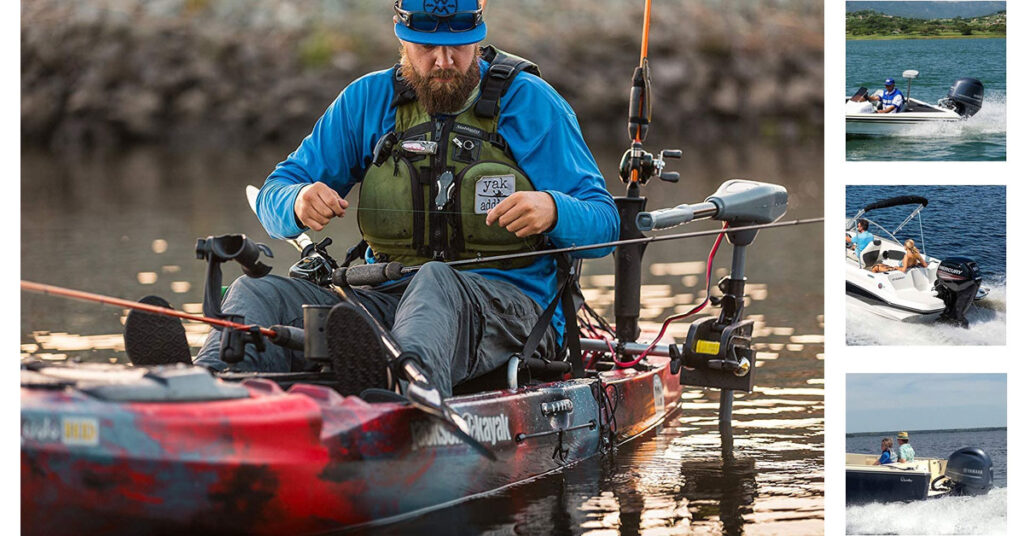
How much does a Boat Motor Cost
2 thoughts on “11 tips to prevent boat from sinking”.
Pingback: Boat Anchor Chain - 11 Things You Should Know
Pingback: 8 Tips To Sail Against The Wind
Leave a Comment Cancel Reply
Your email address will not be published. Required fields are marked *
Save my name, email, and website in this browser for the next time I comment.
Log in or Sign up

You are using an out of date browser. It may not display this or other websites correctly. You should upgrade or use an alternative browser .

WriterGirl Guest
Hello All! I hope you don't mind me reaching out with this odd question... I'm sure the thought of a sinking yacht is NOT one you enjoy contemplating, but I'm really hoping you can help me out here. You lot are the experts and I thought I'd go directly to those who would know best! I am writing a story in which the protagonist needs to sink a yacht. She - like me - doesn't know anything about the inner workings of a yacht, but she is clever and resourceful. She needs to have enough time get back on the dock and out of harms way, but it can't happen so slowly that the antagonist has time to stop it/repair the damage. But he can't die, either. He needs to realize what's happening and be able to get away, too, but without being able to save the yacht. I'm looking for some kind of explosion or a rapidly spreading fire. Can she mess with the engine somehow? Or break something? Or spill some fuel and light a make-shift fuse? Would any of these cause an explosion or fire that would lead to the yacht sinking? Please help me out here with some accurate, factual real-life scenarios. I look forward to reading your responses! Sincerely, Erin T
K1W1 Senior Member
One simply has to overcome the positive buoyancy and their pride and joy will vanish below the waves in short order.
Capt J Senior Member
read a book......I'm sure there are several that would describe various scenario's of yachts lost
bernd1972 Senior Member
Basicaly the trick with boats is that the water is outside...
CaptPKilbride Senior Member
When writing your story, have your clever and resourceful protagonist log onto a yachting website so she can ask how to sink a boat.
Norseman Senior Member
I watched a yacht across the canal from me sink, no help needed. She was a wooden 50 foot ketch built in 1964 and had been sitting in "storage" for a few years with only basic maintenance. Then she sprung a plank. That means the fasteners holding the plank onto the frames let go, either due to corrosion of the screws, or rot in the frame holding the screws. The whole process was automatic, no help needed. Most boats will sink on their own if you wait long enough. To speed up the process you can turn of all pumps and let a garden hose do the job, a slow but sure way of sinking anything from a canoe to a cruise ship.
YachtForums Administrator
Come on guys, she sang your praise and with the exception of Dag, she got smart @$$ answers from the lot. Erin, most (all) of these guys have spent their careers making and keeping things afloat. "Sink" isn't in their vocabulary. There are many ways to sink a boat, but there are variables, such as the hull material and machinery onboard. 1. If it's a wooden hull, drill a few holes in the hull (subsurface, of course) 2. Remove the desalinized hose clamp from the fresh water maker 3. Cut the hose for the generator cooling intake 4. Remove any through hull fittings 5. Tell the wife you're having an affair
Kafue Senior Member
YachtForums said: ↑ 1. If it's a wooden hull, drill a few holes in the hull (subsurface, of course) 2. Remove the desalinized hose clamp from the fresh water maker 3. Cut the hose for the generator cooling intake 4. Remove any through hull fittings 5. Tell the wife you're having an affair Click to expand...
Capt Ralph Senior Member
Ask the kids that sank Yogi. Ah, That's it. If it's a newer boat with side openings or a big stern opening in a follow sea.. Open it up (in the Med, in a storm really makes the news). Water does not stay out for long. For reality, newer super yachts are built to geographical (political) codes. These codes usually dictate how a ship is built and requires some water tight doors in some areas. These should save the ship in case a side door is open in a storm (Yogi still went down). You could omit this technicality from your book, or include it and explain that a relief crew that did not know anything about ships or weather were in charge and left some doors open. http://www.yachtforums.com/threads/proteksan-turquoise-superyacht-yogi-sinks.18129/
NYCAP123 Senior Member
Redundancy is the name of the game with yachts. So sinking one isn't all that easy if there's someone aboard who wants to stop it. Fire extinguishers are located in many locations, as well as automatic systems in the engine spaces. Almost any thrugh-hull will have a seacock that can be closed. So cutting a hose won't do it. Explosives are effective and dramatic, but it's been done a million times in movies. Not dramatic, but if you poured acid on the shaft it would seep into and disolve the shaft log and packing. Again, not very dramatic, but effective and almost impossible to repair. Of course the bilge pumps would have to be disabled, and even then the motors could be turned into bilge pumps. Reduncnacy.
Oh wait, there more; Alter the auto pilot from below. These fancy & remote compasses are usually hidden low in the ship. A magnet or lighter next to the AP compass can make the boat drive up on the rocks or a pinnacle.
Hire an Italian slob to drive your ship on the rocks.
RCRAPPS, Were you driving this one? http://www.oceanofnews.com/5m-112-yacht-nearly-sinks-hitting-rock-off-st-thomas/
K1W1 said: ↑ RCRAPPS, Were you driving this one? http://www.***********.com/5m-112-yacht-nearly-sinks-hitting-rock-off-st-thomas/ Click to expand...
A fire axe against the sea valves for the engine cooling will do. as long as the valves are suffciently damaged there are very few ways to stop the water coming in and the diameter of these water intakes is most often too big for the bilge pumps. No explosives needed. I just hope this won´t be abused for an insurance fraud. But then again everybody who plays with boats knows exactly what he/she doesn´t want to see damaged aboard...
Pascal Senior Member
If it s going to happen at the dock, forget running running aground etc Fire is messy and can quickly get out of control. The most plausible scenario would be to go in th engine room, open everyt sea strainer she can find (main engines, generators, air con, water maker etc...). Remove the handles on all sea cocks so that they can't be closed (will require a wrench) Locate the bilge pump fuses/breakers and pull them out. That shoul do the trick. Glad you are asking, I absolutely hate reading a good book only to have the whole story line sink because the writer didn't bother doing minimal homework!
Kevin YF Moderator
I was just about to post "didn't a yacht sink sometime in the last year or two because the transom door was left open?" when I read rcrapps post. rcrapps said: ↑ Ask the kids that sank Yogi. http://www.yachtforums.com/threads/proteksan-turquoise-superyacht-yogi-sinks.18129/ Click to expand...
The OP said the boat needed to make it back to the dock, so I left out cracking the sea strainers. That would only leave a few minutes before an engine became ballast.
SFS Senior Member
YachtForums said: ↑ The OP said the boat needed to make it back to the dock, so I left out cracking the sea strainers. That would only leave a few minutes before an engine became ballast. Click to expand...
Why not light it on fire and use the tender to get back to the dock =)
- No, create an account now.
- Yes, my password is:
- Forgot your password?

clock This article was published more than 1 year ago
Video captures 130-foot superyacht sinking off southern coast of Italy
A superyacht sank off the southern coast of Italy over the weekend of Aug. 20 in a spectacular capsizing captured on video and shared on Twitter by the Italian coast guard.
The video compilation shows the My Saga , a roughly 130-foot boat, struggling against the waves before slowly sinking into the water.
The yacht was sailing from the town of Gallipoli to Milazzo, Sicily, on Aug. 20, local news outlets reported, when it began to take on water and eventually sank some hours later about nine nautical miles off the port of Catanzaro.
All crew members and passengers were rescued and uninjured, the coast guard said on Twitter. It said it launched an investigation to determine what happened.
Nei giorni scorsi, la #GuardiaCostiera di #Crotone ha coordinato operazioni di salvataggio di passeggeri ed equipaggio di uno yacht di 40m, affondato a 9 miglia al largo di #CatanzaroMarina . Avviata inchiesta amministrativa per individuarne le cause. #SAR #AlServizioDegliAltri pic.twitter.com/kezuiivqsM — Guardia Costiera (@guardiacostiera) August 22, 2022
The My Saga first reported a problem on Aug. 20 after setting sail from Gallipoli , on Italy’s southeastern peninsula, according to the country’s National Associated Press Agency (ANSA). Patrol boats from the Italian coast guard in Crotone and the European Border and Coast Guard Agency (Frontex) were dispatched to the scene.
They found the ship taking on water from its stern. Five people — four passengers and a member of the crew — were initially rescued on a Romanian patrol boat acting on behalf of Frontex. They were then transferred to the coast guard boat and taken to Catanzaro.
According to an Italian official who spoke on the condition of anonymity to discuss details of an ongoing investigation, the My Saga flew a Cayman Islands flag and was owned by a Danish company. The group on board when the boat took on water included six Italian nationals, two Danish citizens and a South African national, the person said.
The owner contracted a towing company to attempt to rescue the ship, according to the official. A tugboat, the Alessandro Second, arrived and took the four remaining crew members — including the captain — onboard before beginning to tow the ship toward Crotone. But bad weather made the process difficult, as did the position of the yacht, which was tilted into the water.
Eventually, the tugboat abandoned the yacht, and it sank into the Gulf of Squillace. The coast guard took the remaining crew members to Catanzaro.
It’s not the first time a sinking yacht has captured attention on the internet. In May, rapper Cardi B posted footage on social media of a yacht sinking near her hotel while she was on vacation in an unknown location. The artist could be heard screaming as she asked whether there wasn’t a “big boat that could save it.” Eventually, she said “bye-bye” as it disappeared into the water. She later clarified that no one was onboard .
I can’t believe I’m actually watching a yacht sink pic.twitter.com/dLL3ZJJv9R — Cardi B (@iamcardib) May 28, 2022
The same month, passersby watched as another multimillion-dollar yacht, the Rendezvous, sank in Torquay Harbor, a marina in southwestern England, after a fire broke out onboard. Authorities warned of potential air and water pollution because the yacht carried about nine metric tons of diesel.
And earlier this month, the 145-foot Aria SF caught fire off the Balearic island of Formentera in Spain in an incident that was also captured on camera and shared widely on social media. Those onboard were evacuated, and no one was hurt, the Guardian reported . The roughly $23 million yacht had reportedly just been delivered to its owner.
Chico Harlan contributed to this report.

- 2024 BOAT BUYERS GUIDE
- Email Newsletters
- Boat of the Year
- 2024 Freshwater Boat and Gear Buyers Guide
- 2024 Boat Buyers Guide
- 2024 Water Sports Boat Buyers Guide
- 2023 Pontoon Boat Buyers Guide
- Cruising Boats
- Pontoon Boats
- Fishing Boats
- Personal Watercraft
- Water Sports
- Boat Walkthroughs
- What To Look For
- Best Marine Electronics & Technology
- Watersports Favorites Spring 2022
- Boating Lab
- Boating Safety

10 Ways to Prevent Your Boat From Sinking Dockside
- By Mike Telleria
- Updated: April 18, 2017
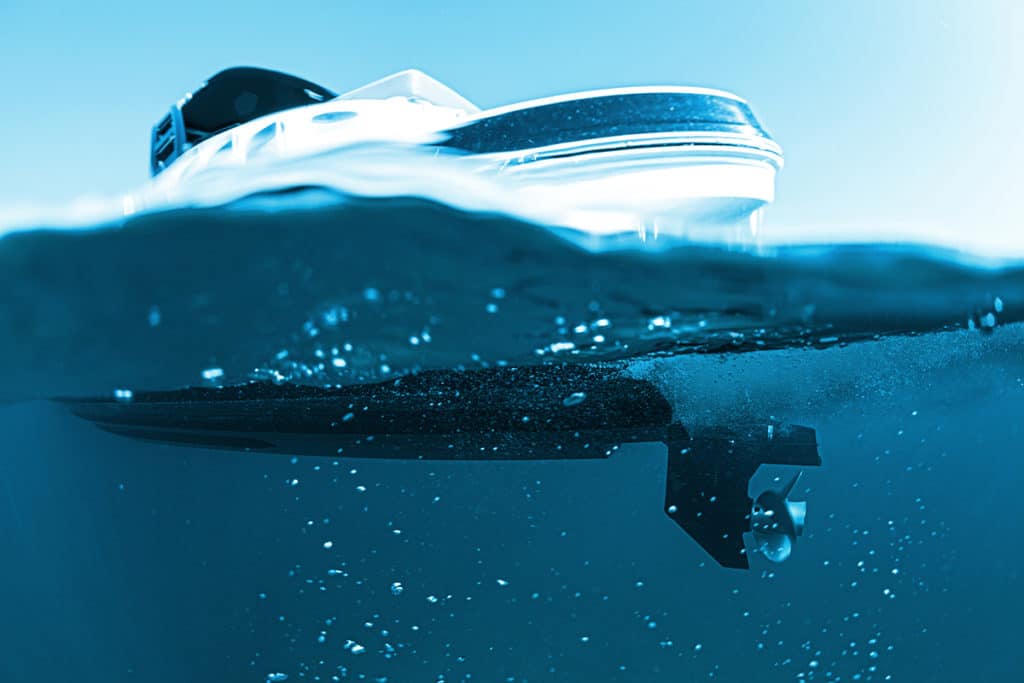
A boat shouldn’t sink unless something really bad happens, right? A high-speed collision, a fiery fuel explosion, a direct strike by lightning — these events certainly can sink a boat. But that’s not how most recreational boats go down. The sad reality is owner neglect sends most boats to the bottom.
Studies of insurance claims by BoatU.S. back this up, showing that more than two-thirds of recreational-boat sinkings happen at the dock or on a mooring. BoatU.S. further estimates that only 35 percent of such sinkings are out of an owner’s hands.
“Absent something like lightning blasting a hole in the boat or the hull becoming impaled on a piling in a major storm, a boat should never sink while sitting at the dock,” says Daniel K. Rutherford, a certified marine investigator with 35 years of marine casualty surveying experience and currently the director of claims and risk management for the Maritime Program Group. “Owner neglect by far sinks most boats at the dock.”
The upside to that? With some forethought, most dockside sinkings are entirely preventable. Here is a 10-point punch list based on the findings by BoatU.S. to keep your boat from sinking in its slip.
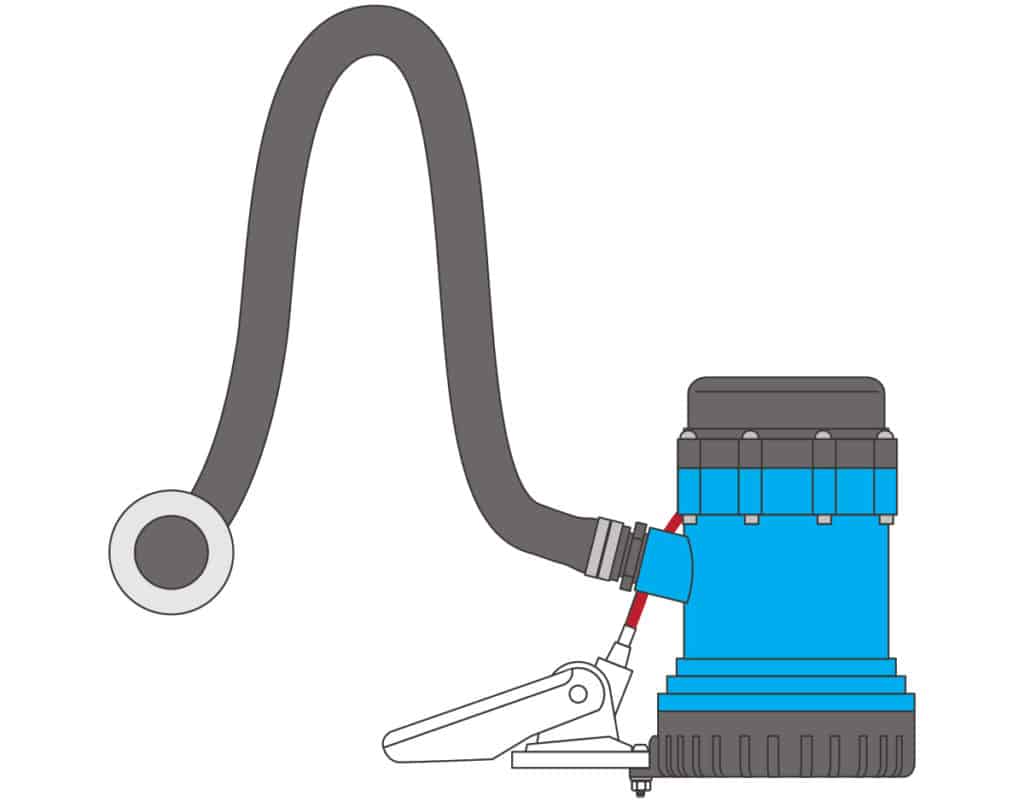
The (Not Always) Mighty Bilge Pump A bilge pump can really save the day in the event of an unexpected gusher, and it’s great for cleaning up the condensation and other unavoidable drips and drops that collect in the bilge. However, there is a huge amount of overreliance on bilge pumps to prevent chronic leaks from sinking a boat. “Nine out of 10 people who call to report a sinking say, ‘The bilge pump stopped working,'” says Beth Leonard of BoatU.S. “That’s not why the boat sank.”
If a small amount of water is continually getting into the boat — like through a leaking hose connection, an ineffective shaft seal, or a minor structural leak — it is not the bilge pump’s job to keep the boat floating indefinitely. The bilge pump is there to buy some time to fix the problem of water getting into the bilge in the first place. Eventually, the pump can fail or drain the battery — and then that little leak that didn’t seem like a big deal can slowly but surely fill the boat until it sinks.
For sure, you want the bilge pump and float switch to be in good working order in the event an unexpected leak does develop, and replacing plastic corrugated bilge-pump hose with nylon reinforced smooth-wall hose is a smart move. A bilge-pump counter that shows how many times the pump has run is a great way to see if the pump is cycling on with greater frequency. If it is, then you want to sniff around for a new leak and repair it immediately.
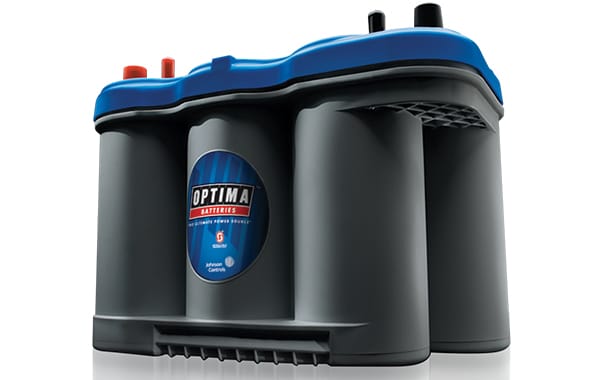
Do Winter Right When it comes to winterizing, an ounce of prevention can be worth gallons and gallons of cure. Ice can damage hoses below the waterline, strainer baskets and through-hull valves. Water can contaminate the gear lube during the boating season — if it freezes, it can crack metal and blow seals. Such issues can send the boat straight to the bottom come the spring thaw. Antifreeze in engine raw-water systems, strainers and freshwater systems, and fresh lube in the gear case are tops on any winterizing checklist.
Batteries sometimes go flat over the winter, rendering the bilge pump useless. If nobody is checking in on a regular basis, one or two minor leaks, or an unlucky rain or snow that ends up in the bilge, could sink her down. Super important point: Visit the boat. Winter or not, regular visits by you or marina staff can many times catch a boat that is starting to sink. You’ll have to deal with it right then, but that’s 1,000 times better than having to resurrect it from the deep.
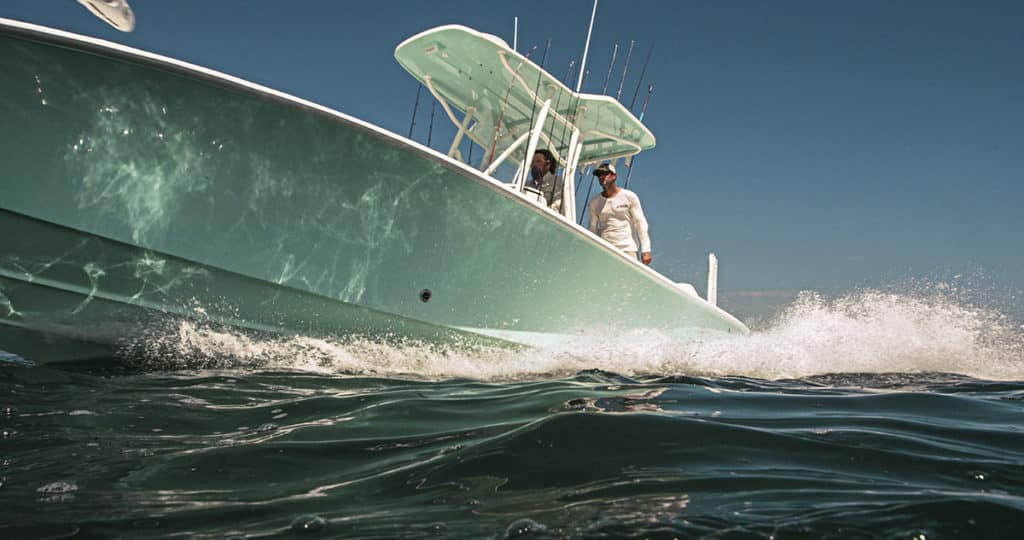
Your Boat is Full of Holes Not to be an alarmist, but your boat is likely already full of holes below the waterline. These can include holes for a drain plug, mounting bolts, transducers, sensors, through-hull valves and other items. In a perfect world, these — and any downstream hose clamps, fittings and strainers — would all be properly fastened, sealed and/or clamped to keep water out. And they likely were when the boat was brand-new. However, age, vibration (and pounding and slapping), thermal cycling, corrosion and other factors can work to loosen clamps and bolts and even cause structural cracks around fittings — all of which can result in leaks.
Do regular checks on all below-the-waterline fittings and connections. Replacing rusty hose clamps with one, or even two, quality stainless-steel clamps on hoses below the waterline is a good idea, as is replacing worn hoses with sturdy, reinforced ones.
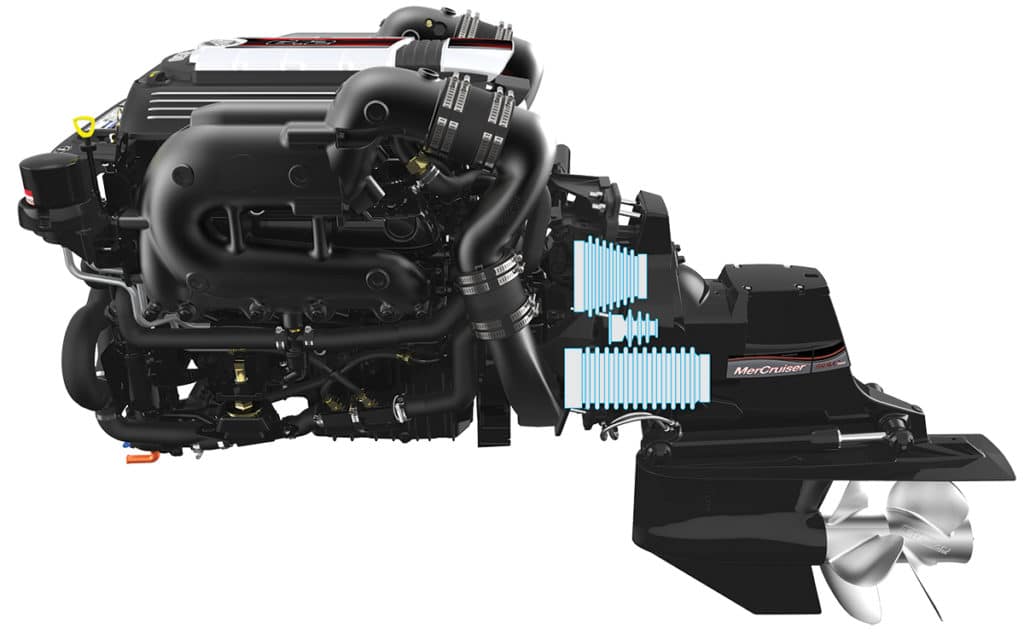
Be Good to Your Bellows Sterndrives account for more than a quarter of all part-failure-related sinkings, and eight out of every 10 sterndrive failures involve damaged bellows. The bellows are the flexible rubber boots that seal out the water between the engine and the drive for the universal joint, exhaust, cooling water and shift cable.
The bellows maintain their watertight seal while allowing the drive to turn side to side and trim up and down, but these repeated movements can eventually result in tearing from fatigue. Age and deterioration can cause the rubber to break down over time, especially if exposed to heat or other harsh conditions. Marine growth can be particularly troublesome by forming in the creases and causing a split. Recommendations include regular inspections for tears or cracks, annual haul-outs to clean and remove growth, and full replacement every three to six years or so. Attention here can improve your odds of staying afloat by double digits.
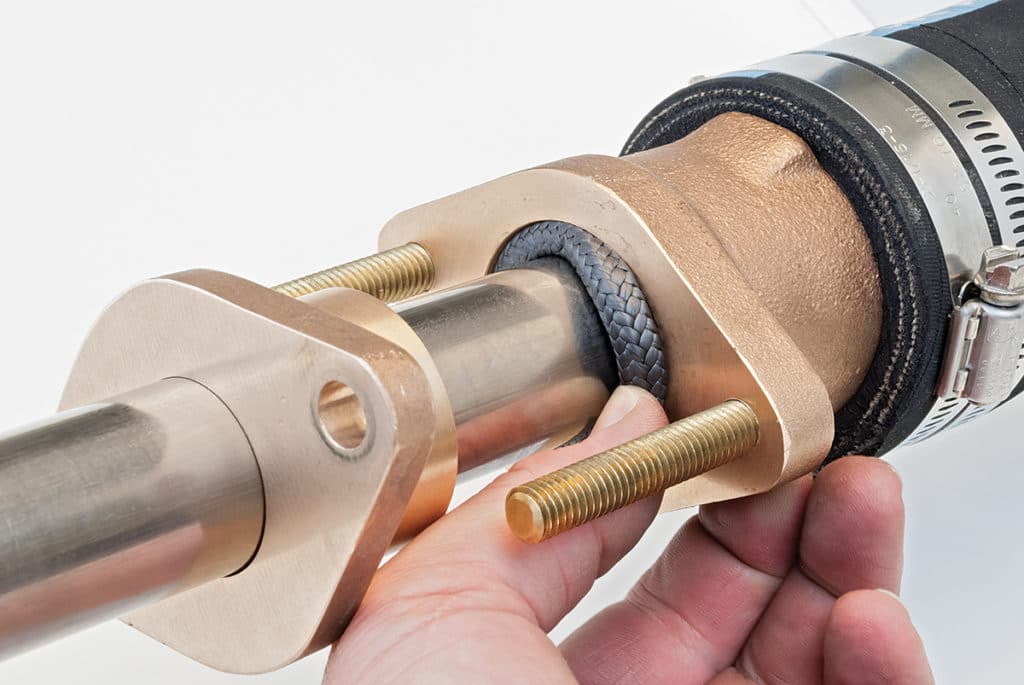
One Drop at a Time One below-the-waterline hole that deserves special attention is the opening where the propeller shaft passes through on an inboard boat. This will often be sealed with a few rings of packing material and a tightening gland all nicely referred to as the “stuffing box.” These are actually designed to allow a small amount of water to pass through into the bilge while the shaft is spinning in order to keep the stuffing box cool — typically only two or three drops per minute. At the dock with the engine secured, however, the seal shouldn’t allow any water inside. A slow and steady drip here can turn into a fast drip, then a stream — and we already know what happens if the bilge pump poops out trying to keep up.
Resist the temptation to keep cranking down on the gland packing year after year. The packing material can only be compressed so far, and too much pressure could eventually damage the shaft. A good rule of thumb is to replace the packing material every other year if the boat is in regular use.
Mechanical shaft seals are becoming popular, and they work great at keeping water out. But they do require a cooling water source, typically from a through-hull connection or a connection to the engine cooling water system. Either way, these connections need to be monitored to ensure they don’t spring a leak themselves.
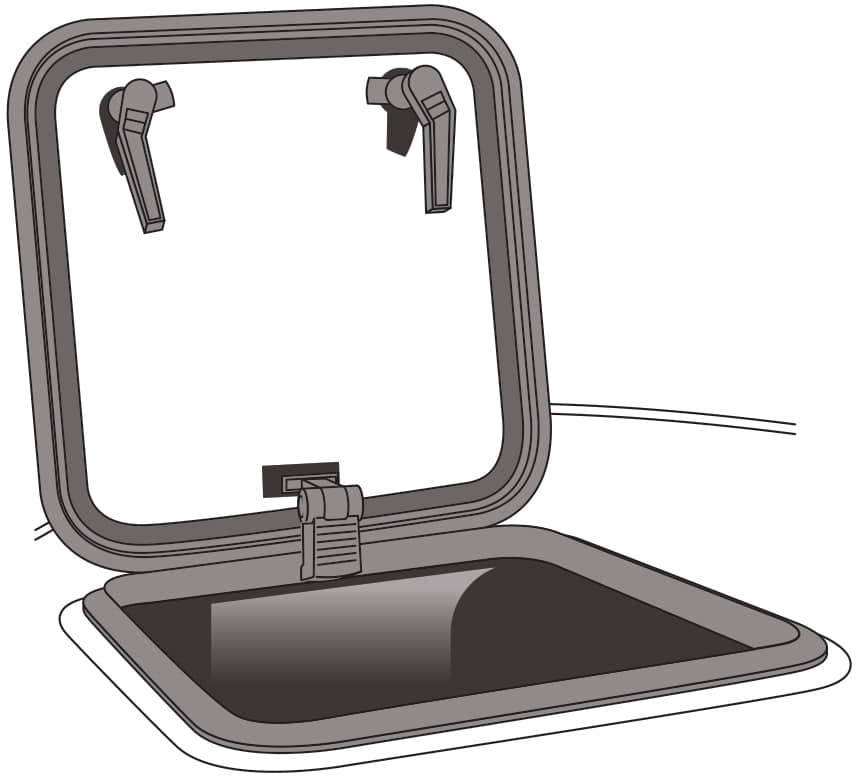
Batten Down the Hatches This simple step would prevent countless sinkings. At some point, it is going to rain. If the hatches leak — especially cockpit hatches where rainwater can accumulate — then we can end up with water in the bilge, an overwhelmed bilge pump, and a progressive sinking situation. Hatches need to have good, watertight gaskets, and they need to be able to be dogged down. Gaskets can deteriorate over time, so hit all the hatches with a freshwater hose once a year to make sure they are watertight (more on this below). And be sure to check that all are positively dogged down whenever away from the boat for anything more than a quick errand. The same advice goes for fuel fills, water fills and deck plates: Check the seals and replace as required.
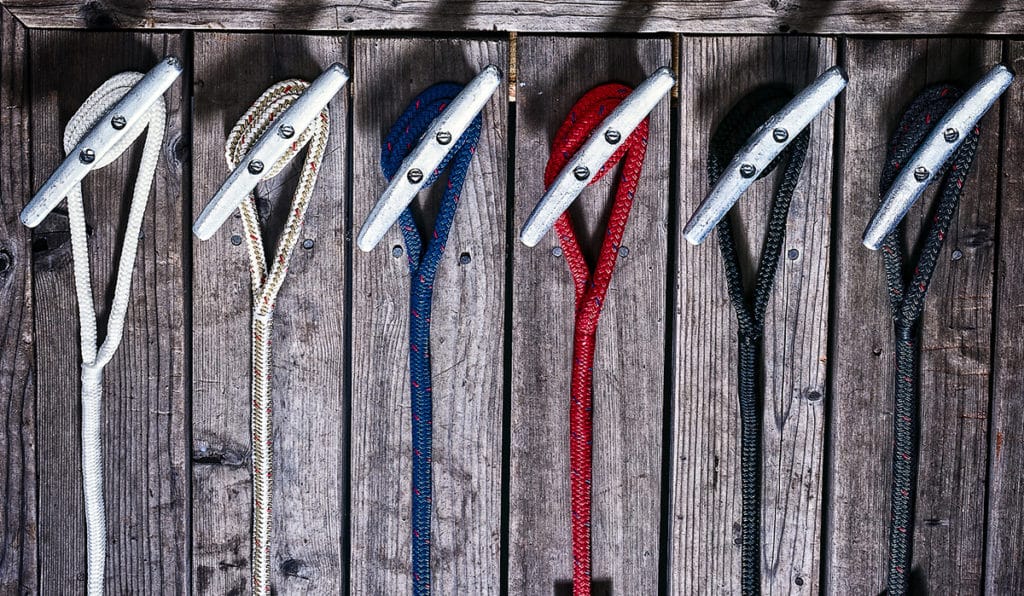
Good Lines A falling tide can easily trap a boat beneath a dock, where it will fill up with water as the tide rises — often leaving it hanging on its side by its lines. Good dock-line technique can save the day. It’s important to know the range between high and low tide to leave enough slack in the lines to allow the boat to stay centered and level. Long lines set at shallow angles, spring lines that run the full length of the boat, and crossed stern lines are all recommended. (TideMinders offers a product for boats that tie to pilings.)
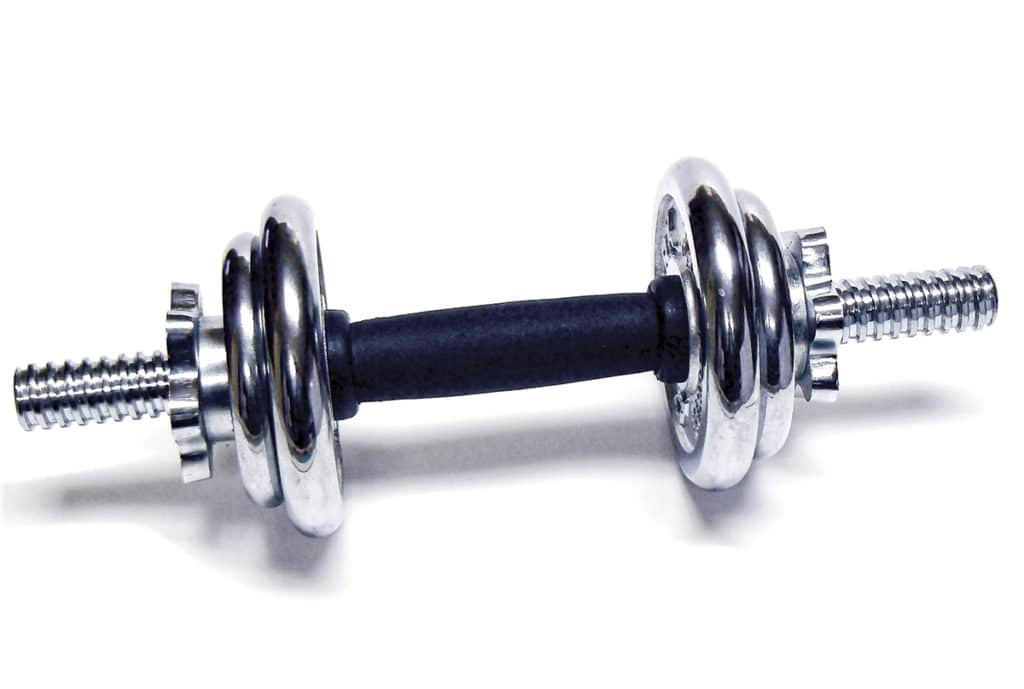
Weighty Issues It’s not uncommon to see a boat with cockpit scuppers or freeing ports designed to sit barely above the waterline once people, gear and fuel are aboard. Now replace that two-stroke outboard with a heavier-by-200-pounds four-stroke and watch the scuppers sink down to the waterline before people and gear are aboard. A big rain or an unexpected leak can easily push the scuppers below the water, causing them to allow water in the boat instead of out. This creates a progressive situation where the weight of the water pushes the boat deeper and allows more water to come in at a faster rate. Always be careful when adding weight to the boat.
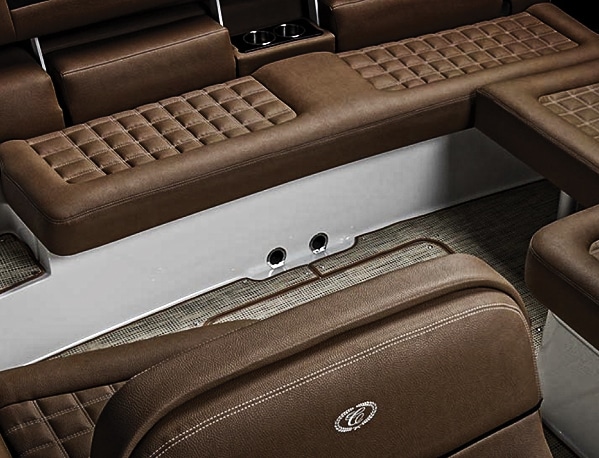
Cockpit Crisis The cockpit is where a lot of boating fun happens — think fishing, staging for watersports, and socializing. Cockpit flooding issues, however, can shut down the party before it ever gets started. Low freeboard trailer boats can be swamped when docked with the stern facing open water. Stormy conditions can generate waves big enough to splash into the cockpit — sometimes overwhelming the drainage and bilge pump.
There have also been a surprising number of sinkings due to cockpit drain fittings and hose fittings leaking into the bilge. Sometimes these are routed through the bilge area with little to no access, making it difficult to ensure hose clamps are tight and the hose is in good condition. There have even been cases of cockpit drains that drain directly into the bilge instead of overboard. Yikes! Clear, effective drains, tight cockpit covers, and vigilance during stormy weather could prevent one big rain from spelling disaster.
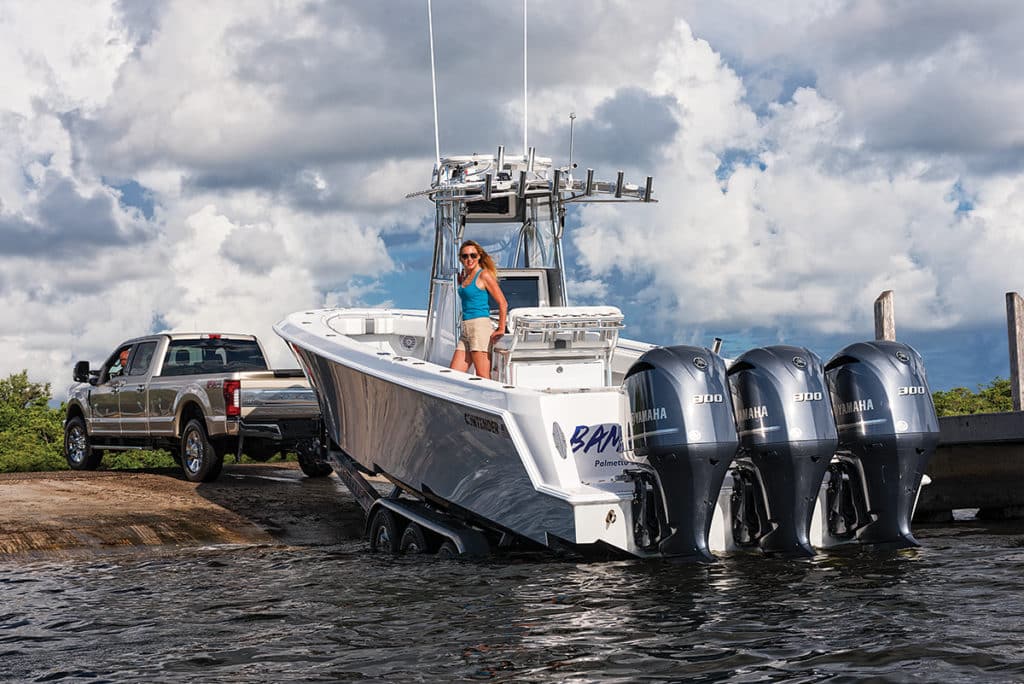
Doh! Of course, there are always a few bonehead mistakes that send boats to the bottom every year. Forgetting the drain plug when launching, forgetting to tighten the lid after cleaning a strainer, and leaving a shore hose running on deck after cleaning have all resulted in multiple dockside sinkers. Good habits can be helpful, like always checking for water ingress after launching and after cleaning a strainer, and always putting away shore hoses after use. Another good habit is conducting a yearly stress test by hosing down the boat with gobs of water to make sure the hatches don’t leak and the drains flow freely — any drips that make it to the bilge should be rectified. Then put the hose in the bilge to make sure the pump and float switch will be ready for duty if there is an unexpected gusher.
- More: Boating Safety , How-To
More How To
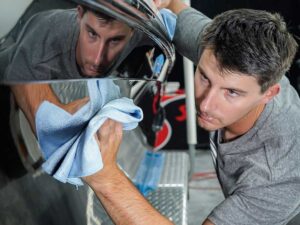
Eight Tips for Waxing Your Boat
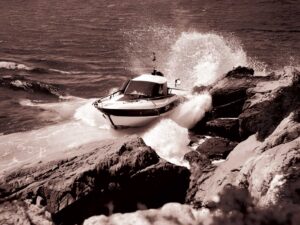
What to Do if Your Boat’s Engine Dies

I Learned About Boating From This: Capsize, Rescue and Lessons Learned
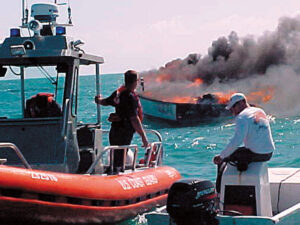
Should You Abandon Ship During a Boat Fire?
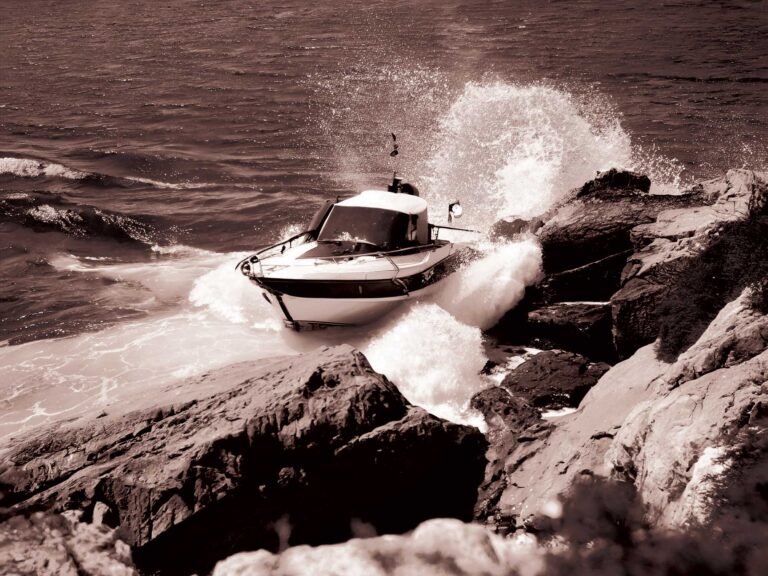
Boat Test: 2024 Nuova Jolly Prince 33 CC

ProTournament Elite Gen 3 Chargers
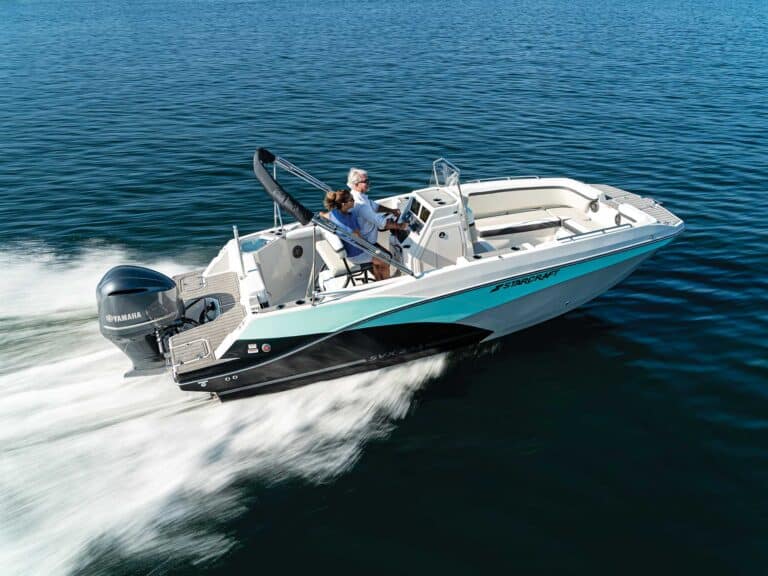
Boat Test: 2024 Starcraft SVX 231 OB CC

- Digital Edition
- Customer Service
- Privacy Policy
- Cruising World
- Sailing World
- Salt Water Sportsman
- Sport Fishing
- Wakeboarding
Many products featured on this site were editorially chosen. Boating may receive financial compensation for products purchased through this site.
Copyright © 2024 Boating Firecrown . All rights reserved. Reproduction in whole or in part without permission is prohibited.

How Many Yachts Sink Each Year? Here’s What The Data Says

From leisurely sailing trips to luxury vacations, yachts have become a popular way to explore the worlds seas.
But despite their popularity, the data shows that many yachts sink each year, making them one of the most dangerous vessels on the water.
In this article, well explore the scope of the problem, the causes of yacht sinking, who is most at risk, and the impact of yacht sinking.
Plus, well provide safety tips for yacht owners and what the data says about how many yachts sink each year.
So, if youre an avid yacht owner or just curious about this topic, read on to find out more.
Table of Contents
Short Answer
It is difficult to estimate exactly how many yachts sink each year, as many incidents go unreported.
However, the US Coast Guard estimates that there are roughly 500-700 recreational boating accidents resulting in sinking each year in the US alone.
Additionally, it is estimated that between 5-10% of all recreational boats are lost each year due to sinking or other causes.
The Scope of the Problem
The exact number of yachts that sink each year is unknown, but it is estimated that hundreds of vessels are lost annually due to a variety of causes.
Most of these losses are of smaller vessels, with the majority of accidents occurring at night and in areas with little to no navigation assistance.
While the causes of these accidents can range from mechanical problems to storms, collisions are the leading cause of yacht sinkings.
These accidents can have serious consequences, including the loss of lives and damage to the environment.
This is why it is important for all yacht owners to ensure their vessels are properly maintained and equipped for safe navigation.
This includes having the proper safety equipment, such as life jackets, flares, and radios, as well as up-to-date navigational charts and a well-trained crew.
In addition to the loss of life, the financial implications of these accidents can be significant.
Depending on the size of the vessel, the cost of a sinking can range from thousands of dollars to hundreds of thousands or even millions.
Damage to the environment can also be costly, as it can take years to clean up the oil and debris from a sunken yacht.
In order to reduce the number of yachts that sink each year, it is important for yacht owners to practice safe sailing techniques and take all necessary safety precautions.
Additionally, yacht owners should regularly inspect their vessels and have them serviced by a qualified professional when needed.
By taking these steps, yacht owners can help ensure their vessels are safe and reduce the number of vessels that sink each year.
Causes of Yacht Sinking

When it comes to the causes of yacht sinking, there are many factors that can contribute to the loss of a vessel.
The most common causes include collisions with other vessels, severe storms, and mechanical problems.
Collisions can occur between two vessels or with a larger floating object, such as a buoy or pier, and can cause significant damage to the yacht.
Severe storms can create large waves and powerful winds that can easily overwhelm a yacht, while mechanical problems can include engine failure, faulty equipment, or poor maintenance.
Additionally, many of these accidents occur at night or in areas with limited navigation assistance, which can make it difficult for captains to safely navigate their vessels.
As a result, it is important for all yacht owners to ensure their vessels are properly maintained and equipped for safe navigation.
Who Is Most At Risk
When it comes to yacht losses, certain types of vessels are more at risk than others.
Smaller yachts and sailboats are particularly vulnerable, as they dont have the same levels of safety equipment and stability that larger vessels have.
Additionally, recreational boaters are more likely to experience an accident due to their lack of experience and knowledge of the sea.
Finally, yachts and sailboats that are not properly maintained or equipped with the latest safety equipment are also more likely to experience an accident.
All of these factors can contribute to the hundreds of yachts that sink each year.
In terms of geography, yachts that navigate in areas with limited navigation assistance (such as in remote parts of the ocean) are more likely to experience an accident.
Additionally, yachts that sail at night or in bad weather are also more likely to sink.
Finally, areas with higher boat traffic are also more likely to experience a yacht sinking, as the risk of a collision is greater.
It is important for all yacht owners to be aware of the risks and take the necessary steps to ensure the safety of their vessel.
This includes having the latest navigation equipment and safety equipment onboard, as well as conducting regular maintenance and inspections.
Additionally, boat owners should also be aware of the potential dangers of sailing in certain areas and take the appropriate precautions.
By following these simple steps, yacht owners can reduce the chances of their vessel sinking and help ensure the safety of everyone onboard.
The Impact of Yacht Sinking

The loss of any yacht, whether large or small, can have serious consequences.
Unfortunately, yacht sinking is not a rare occurrence – it is estimated that hundreds of vessels are lost each year due to various causes.
This can lead to devastating losses of lives, extensive damage to the environment, and costly financial losses.
When a yacht sinks, it can cause extensive damage to the marine environment.
This is because the sinking vessel often releases hazardous materials such as fuel, oil, and other hazardous substances into the water.
This can cause extensive damage to the local marine life, as well as disrupt the normal flow of the ocean.
Additionally, sinking yachts can also cause damage to nearby ships and vessels, as well as any nearby docks or ports.
The loss of a yacht can also be financially devastating.
Yachts are expensive pieces of property and their loss can cause a significant financial loss to their owners.
In addition, the cost of the vessel’s insurance policy, as well as any associated legal fees, can also be costly.
Finally, the loss of a yacht can have serious emotional consequences.
The loss of a beloved vessel can be devastating for its owners, who may have spent years and considerable money investing in their yacht.
Additionally, any loss of life associated with a yacht sinking can be devastating for the families and friends of those lost.
In conclusion, yacht sinking is a very serious issue, and one that can have serious consequences.
Additionally, yacht owners should always be aware of the potential risks associated with sailing, and take the necessary precautions to minimize the risk of sinking.
How to Reduce the Risk of Sinking
Yacht owners should take steps to reduce the risk of their vessels sinking.
This includes using the proper safety equipment and performing regular maintenance on the vessel.
Additionally, yacht owners should ensure they have the necessary navigation skills and knowledge to navigate safely.
It is also important to make sure the yacht is equipped with life-saving devices such as life jackets, flares, and a life raft.
The United States Coast Guard recommends that all vessels have a minimum of three life jackets and a personal flotation device for each person aboard.
Additionally, flares should be stored in a waterproof container that can be easily accessed and used in case of an emergency.
Yacht owners should also review and adhere to all local, state, and federal navigation regulations.
These regulations can vary by region and may include areas such as speed limits, navigation channels, and restricted areas.
Additionally, yacht owners should be familiar with basic navigation techniques such as chart reading and piloting.
Finally, yacht owners should be aware of the weather conditions in their area and plan their voyages accordingly.
They should check weather forecasts before setting out and be prepared to make changes or even cancel their trip if the conditions are not favorable.
Additionally, yacht owners should be aware of the dangers of storms and take necessary precautions to stay safe.
Safety Tips for Yacht Owners

Yacht owners must take safety seriously, as even the most well-maintained vessel can become a casualty of the sea.
Yacht owners should heed the following safety tips to help minimize the chances of their vessel sinking: Ensure your yacht is equipped with the latest navigation tools and instruments, such as a radar, GPS, and chartplotter.
These should be regularly maintained and calibrated to ensure accurate readings.
Make sure your yacht is equipped with the appropriate number of life jackets and emergency equipment, such as flares, fire extinguishers, and a first aid kit.
Always monitor the weather conditions and plan your voyage accordingly.
Be aware of any storms that may be in the area and avoid sailing in rough waters.
Have a proper check-in procedure with the local Coast Guard or harbor master before departing.
Have a designated lookout and designate a person to be in charge of navigation at all times.
Make sure your yacht is properly maintained and serviced.
Have a professional inspect it regularly and replace any worn or damaged parts.
Make sure your yacht is insured, as this can help in the event of a major accident or loss.
Be mindful of marine traffic and be aware of the navigation rules for the area.
Be aware of the risk of collisions, particularly in crowded areas or at night.
By following these safety tips, yacht owners can help to ensure the safety of themselves and their vessels.
Additionally, it is important for all yacht owners to remain aware of the number of yachts that sink each year and to take the necessary precautions to prevent such occurrences.
What the Data Says
When it comes to understanding just how many yachts sink each year, it can be difficult to get an exact number due to the lack of reporting.
However, data suggests that hundreds of vessels are lost each year due to various causes.
The most common reasons for these losses are collisions, storms, and mechanical problems.
The majority of yacht losses occur in smaller vessels, with most losses occurring at night and in areas with little to no navigation assistance.
This is because these areas are more difficult to navigate and often have hidden hazards that can be difficult to spot.
Additionally, smaller vessels are more vulnerable to storms and collisions, making them more likely to sink.
This is why it is so important for all yacht owners to ensure their vessels are properly maintained and equipped for safe navigation.
By taking the necessary precautions, yacht owners can help minimize the number of yachts lost each year.
In addition to taking the necessary precautions, it is also important for yacht owners to stay informed about the latest developments in yacht safety.
This includes keeping up with the latest regulations and safety protocols, as well as staying informed about the latest technological advances that could help improve the safety of their vessels.
By following these simple steps, yacht owners can help reduce the number of yachts lost each year and ensure that their vessels remain safe and seaworthy.
Final Thoughts
Yacht sinking is a serious problem that affects hundreds of vessels each year.
It can cause devastating damage to property, the environment, and even human lives.
As such, it’s important for all yacht owners to be aware of the risks and take action to reduce them.
This means remaining vigilant while out on the water, taking steps to ensure their yacht is properly maintained, and equipping their vessels with the necessary safety gear.
By following these safety tips, yacht owners can help to ensure a safe and enjoyable experience on the water.
James Frami
At the age of 15, he and four other friends from his neighborhood constructed their first boat. He has been sailing for almost 30 years and has a wealth of knowledge that he wants to share with others.
Recent Posts
Does Your Boat License Expire? Here's What You Need to Know
Are you a boat owner looking to stay up-to-date on your license requirements? If so, youve come to the right place! In this article, well cover everything you need to know about boat license...
How to Put Skins on Your Boat in Sea of Thieves? (Complete Guide)
There is a unique sense of pride and accomplishment when you show off a boat you customized to your exact specifications. With Sea of Thieves, you can customize your boat to make it look like your...

IMAGES
VIDEO
COMMENTS
A 5cm (2in) diameter hole 30cm below the water will let in 11,000 litres in one hour. Move that hole down to 1m, and 20,000 litres of water will flow in. The yacht reached Salcombe safely and the ...
By Morten Storgaard / Boating, Sailboats, Yachts / Reviewed by: Albert Presgraves, Boater, Engineer. Yachts can tip over, and they can sink just like any other type of boat. However, some yachts can capsize and sink more easily than others. The size of the yacht and the draft plays an important role when it comes to capsizing.
Advertisement. Trim to slow the flow. If the leak is on the starboard side, shift crew and gear to port. Even if the hole doesn't clear the water, moving it higher slows the flow. Head for shore. Intentionally grounding on a bar or beach may be better than sinking, if you can avoid jagged rocks or high surf. Stay with the boat.
Yachts can sink for a variety of reasons. Poorly maintained or aging boats can take on water and sink due to structural failure or leaks. If a boat takes on too much water from rough seas, it can become unstable and sink. Other common causes of yacht sinking include collisions with other objects, running aground on a shallow area, or improper ...
In August 2022, I remember coming across a news story of a yacht that sank in Italy. The footage clearly shows that it's tilted, and the choppy waters only made things worse for it. I'll tell you how tilting (excessive listing) can sink a yacht. Take note that that's a 131-foot vessel.
Yachts can sink due to various factors, ranging from missing or damaged hose clamps to unsecured engine hoses. Spring rains, broken sea strainers, and leaking stuffing boxes can also pose a risk. Regular maintenance and inspections are crucial to identify and address these issues early on, minimizing the chances of your yacht taking on water. ...
Clogged scuppers: If you leave your boat docked year round, dirt, leaves and other debris could plug the scuppers and cause your ship to sink. If the suppers are clogged, water will not be able to empty. Avoiding routine maintenance: Make sure to perform seasonal maintenance on the boat properly.
There are two reasons for this discrepancy. One reason is whenever a boat leaves the dock, someone is aboard, which leaves open the possibility that the leak will be discovered and the problem corrected before it sinks the boat. And the second reason is that boats tend to spend a majority of their time at the dock.
Use your engine. Close the seacock, cut the intake hose between the through-hull and sea strainer, and tie-wrap or clamp a T-shirt over the end to keep out debris. Diesels move more water than gas engines do — a Cummins QSB engine pumps 1,500 gph at 1,000 rpm and over 4,000 gph near wide-open throttle.
Often, the tightening gear and its case are mild steel, which rusts away. 6. Trapped Under a Dock. What Happened: You tied up the boat at low tide. The wind pushed part of the boat under the dock, the tide came up, and the boat became trapped beneath the dock, then sank.
Make sure the wires aren't tangling up in the switch. For power boats, remember that bilge water rushes forward and back while underway. This rush of water can damage float switches. For the stern pump, place the switch with the float facing aft so that the rushing water won't catch the flapper and tear it off.
Boats sink when something causes their density level to drop lower than that of the surrounding water. Here are four common ways that happens.
Flooding is the number one cause for ships to sink. As more water enters the boat, the more weight it adds. Depending on where the water is coming in at will affect the weight distribution of the vessel. This causes the boat to lean or dive down quickly. Collisions. Collisions with an object or the ground can cause water to flood the boat.
Short Answer. Yachts don't sink often, but it can happen in certain conditions. If a yacht is not maintained properly or if it is overloaded, it can be at risk of sinking. Sinking can also be caused by storms, collisions, or running aground. It is important to regularly inspect and maintain a yacht properly to ensure it is safe to sail.
This is a measure of the amount of space inside a boat that can be flooded without the boat sinking. This reserve buoyancy volume can be visualized by floating a container in a bathtub and then slowly pouring in water. The container sits lower and lower in the water until it reaches a point at which it suddenly sinks.
If your boat starts to sink, you'll need human intervention to keep her off the bottom. A helpful marina manager comes in handy here, too; keep his or her palm well-greased. Even better is a full-function monitoring system you can access remotely. There are several on the market; for example, Siren Marine's Siren 3 Pro monitors bilge pump ...
A t 3:24am in the Atlantic Ocean, a catastrophe unfolds across the moonlit waters. The MS Seascape - a 200-metre, six-storey cargo vessel carrying 4,000 new electric vehicles - is pushed by ...
Inspect the boat regularly for any damage that may have occurred as a result of the extra weight. If any damage is found, repair it immediately. 7. Keep a lookout for obstacles in the water. When you're out on the open water, it's important to be aware of the obstacles that can put your boat at risk of sinking.
FREE Boater Bootcamp for newer boat owners gives you the insights on boat ownership basics, navigation and practical rules of the water and how to avoid, be ...
There are many ways to sink a boat, but there are variables, such as the hull material and machinery onboard. 1. If it's a wooden hull, drill a few holes in the hull (subsurface, of course) 2. Remove the desalinized hose clamp from the fresh water maker. 3.
3 min. A superyacht sank off the southern coast of Italy over the weekend of Aug. 20 in a spectacular capsizing captured on video and shared on Twitter by the Italian coast guard. The video ...
A boat shouldn't sink unless something really bad happens, right? A high-speed collision, a fiery fuel explosion, a direct strike by lightning — these events certainly can sink a boat. But that's not how most recreational boats go down. The sad reality is owner neglect sends most boats to the bottom.
When a yacht sinks, it can cause extensive damage to the marine environment. This is because the sinking vessel often releases hazardous materials such as fuel, oil, and other hazardous substances into the water. This can cause extensive damage to the local marine life, as well as disrupt the normal flow of the ocean. ...